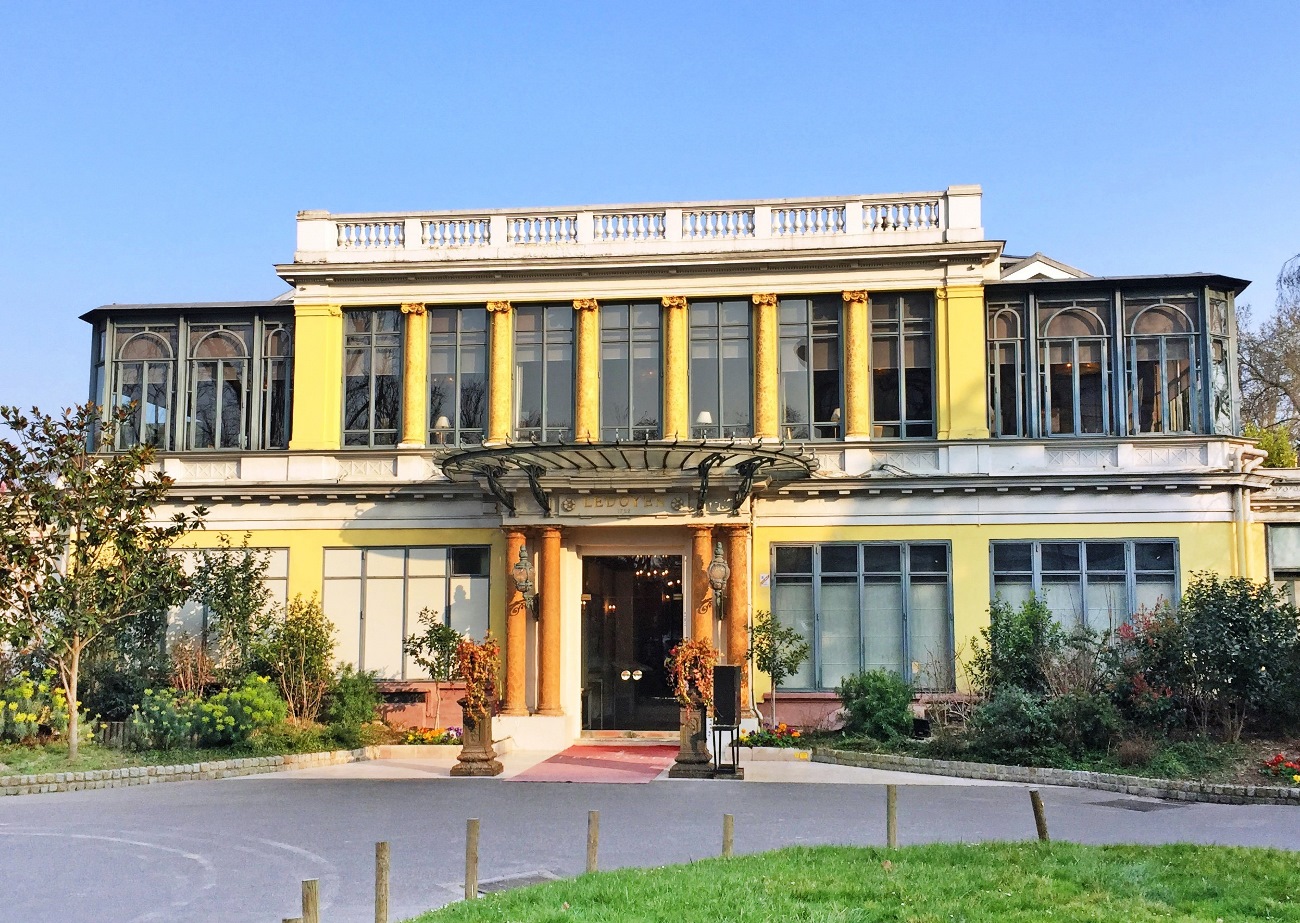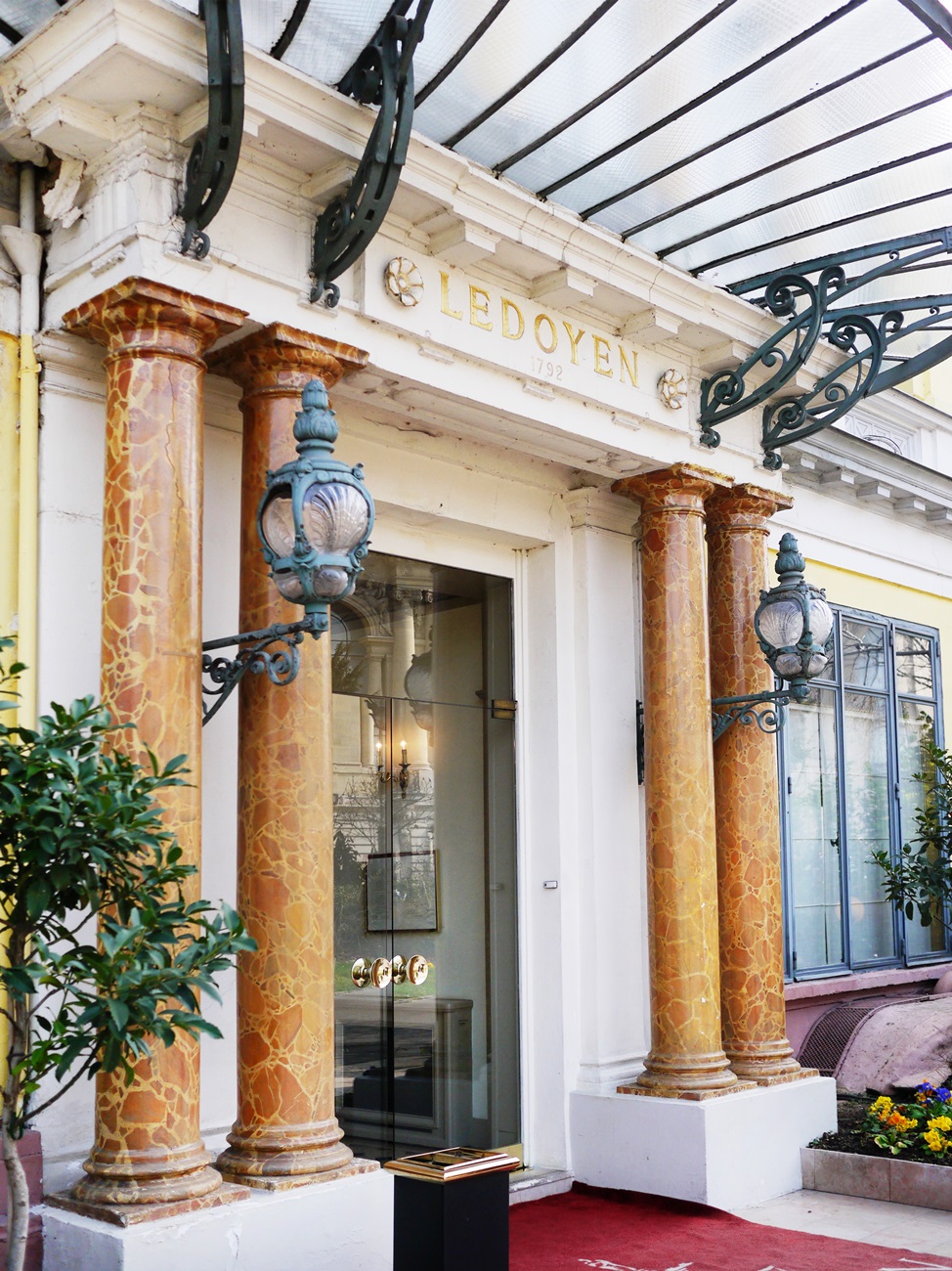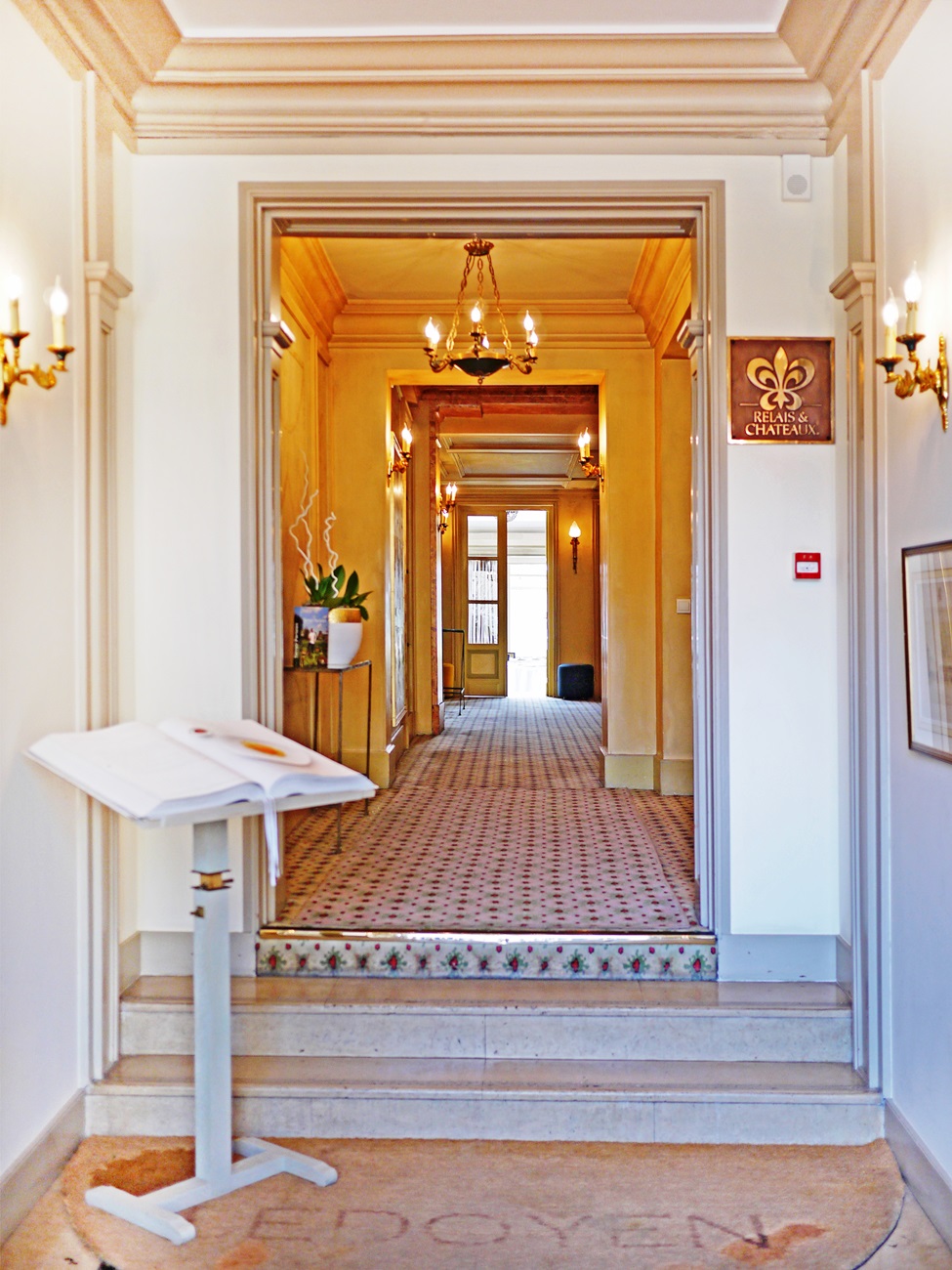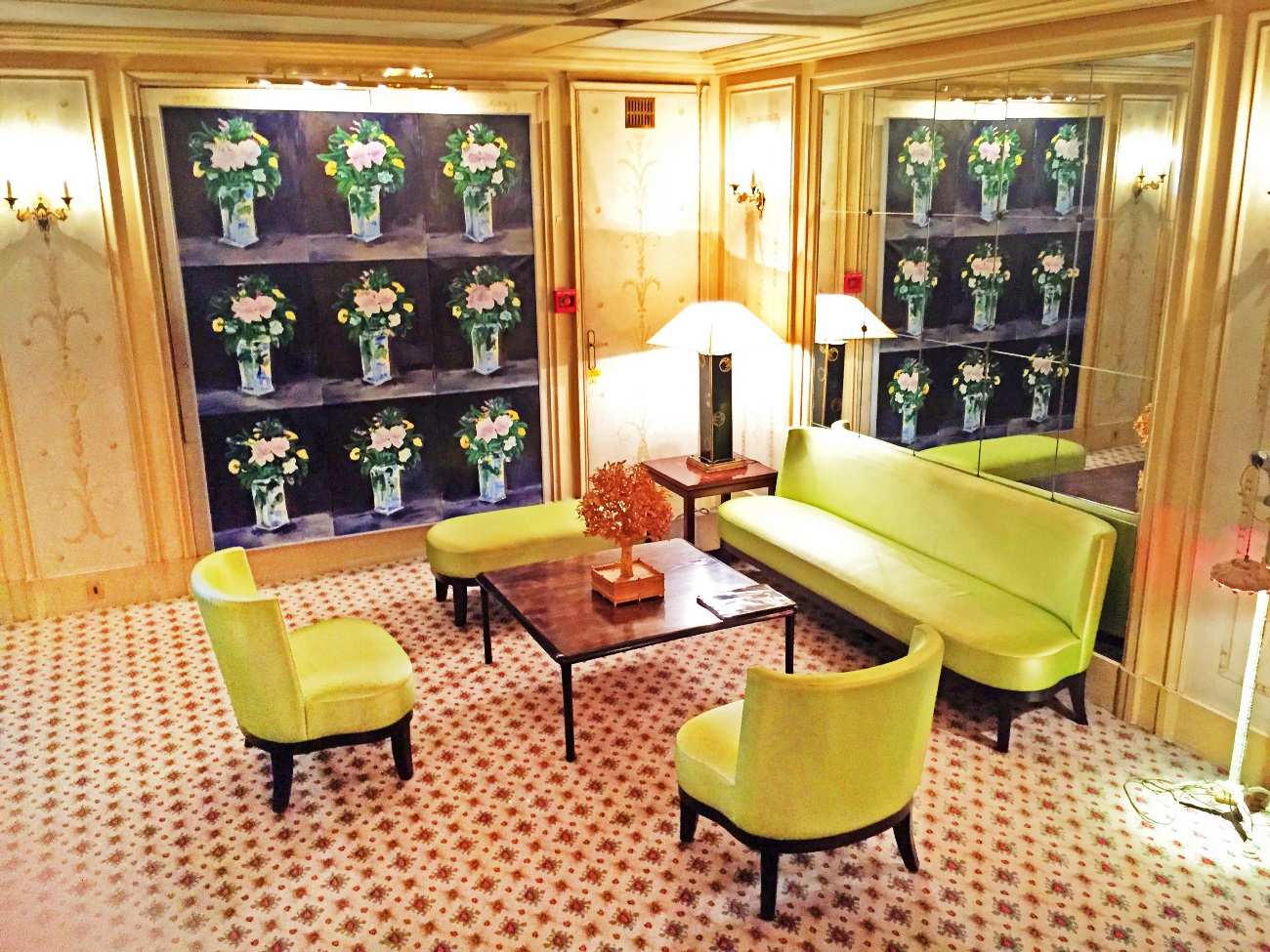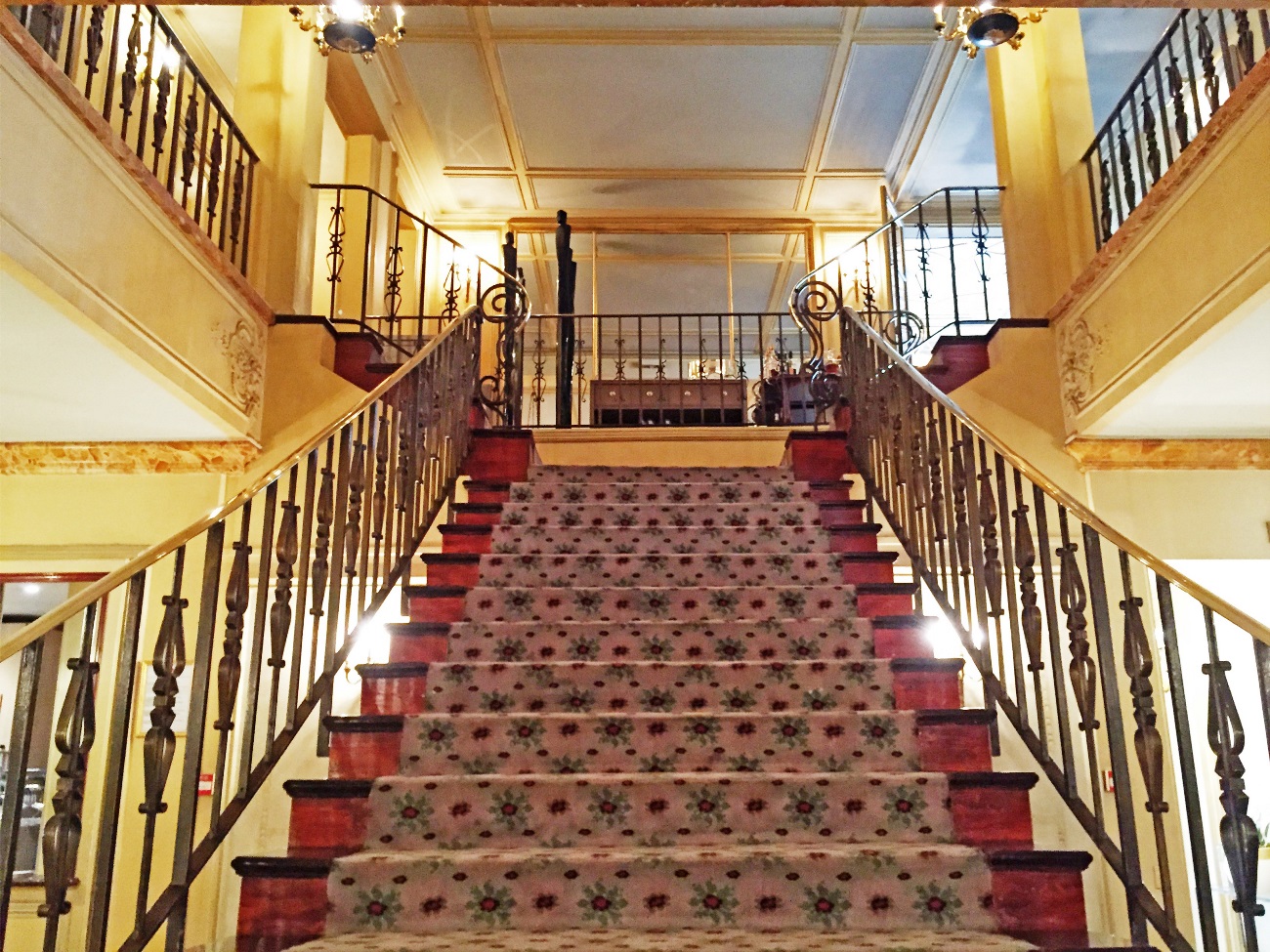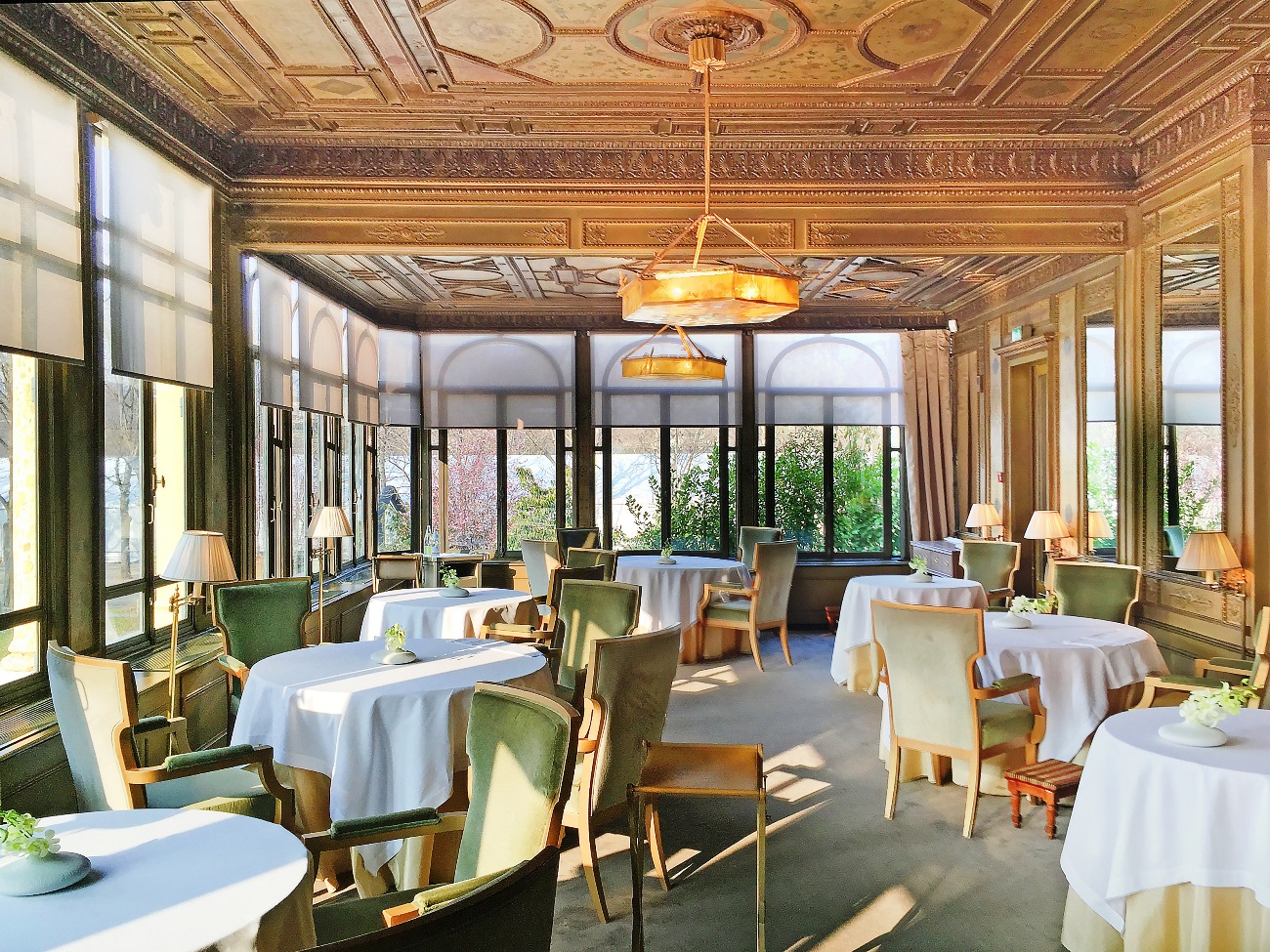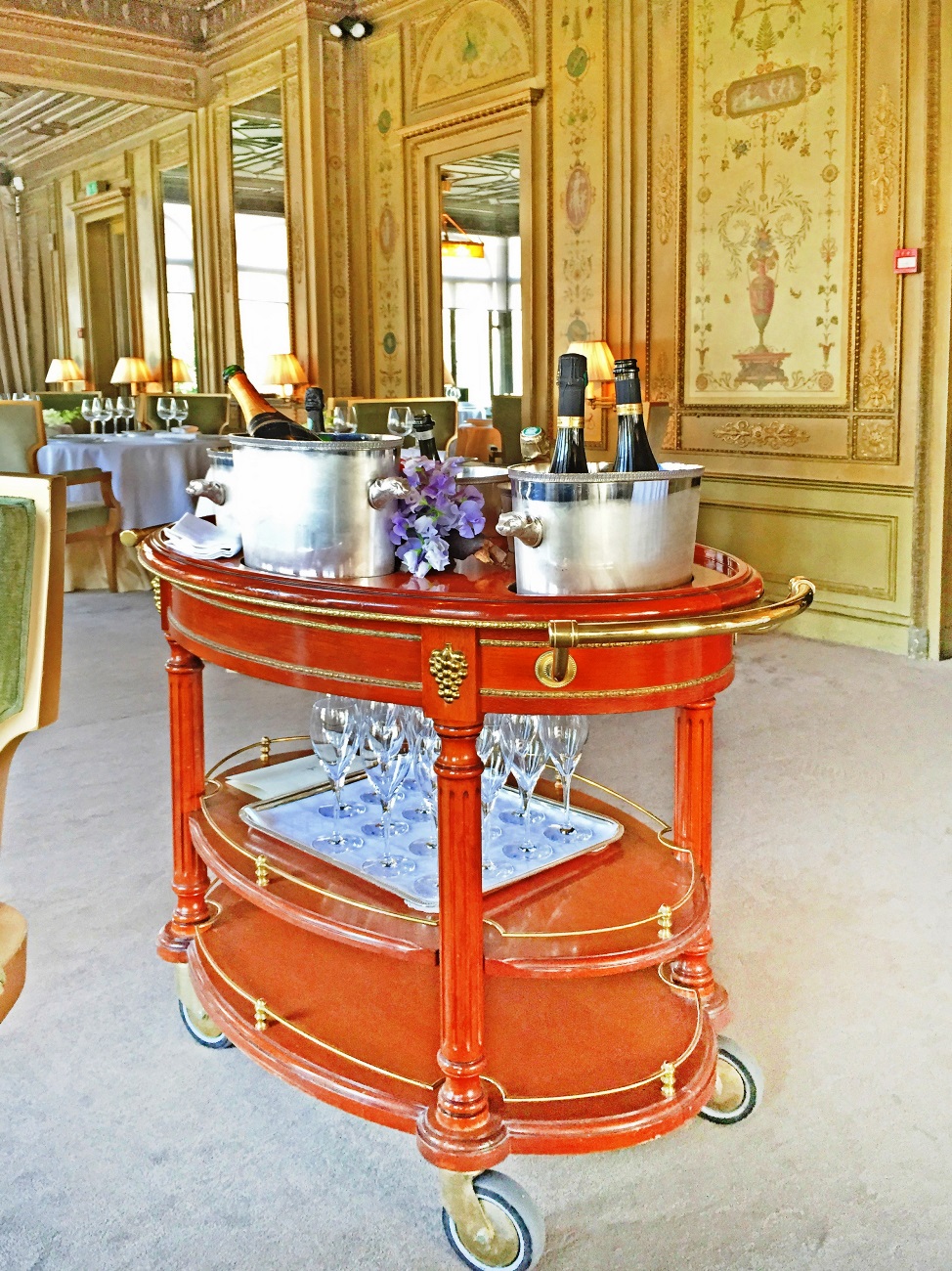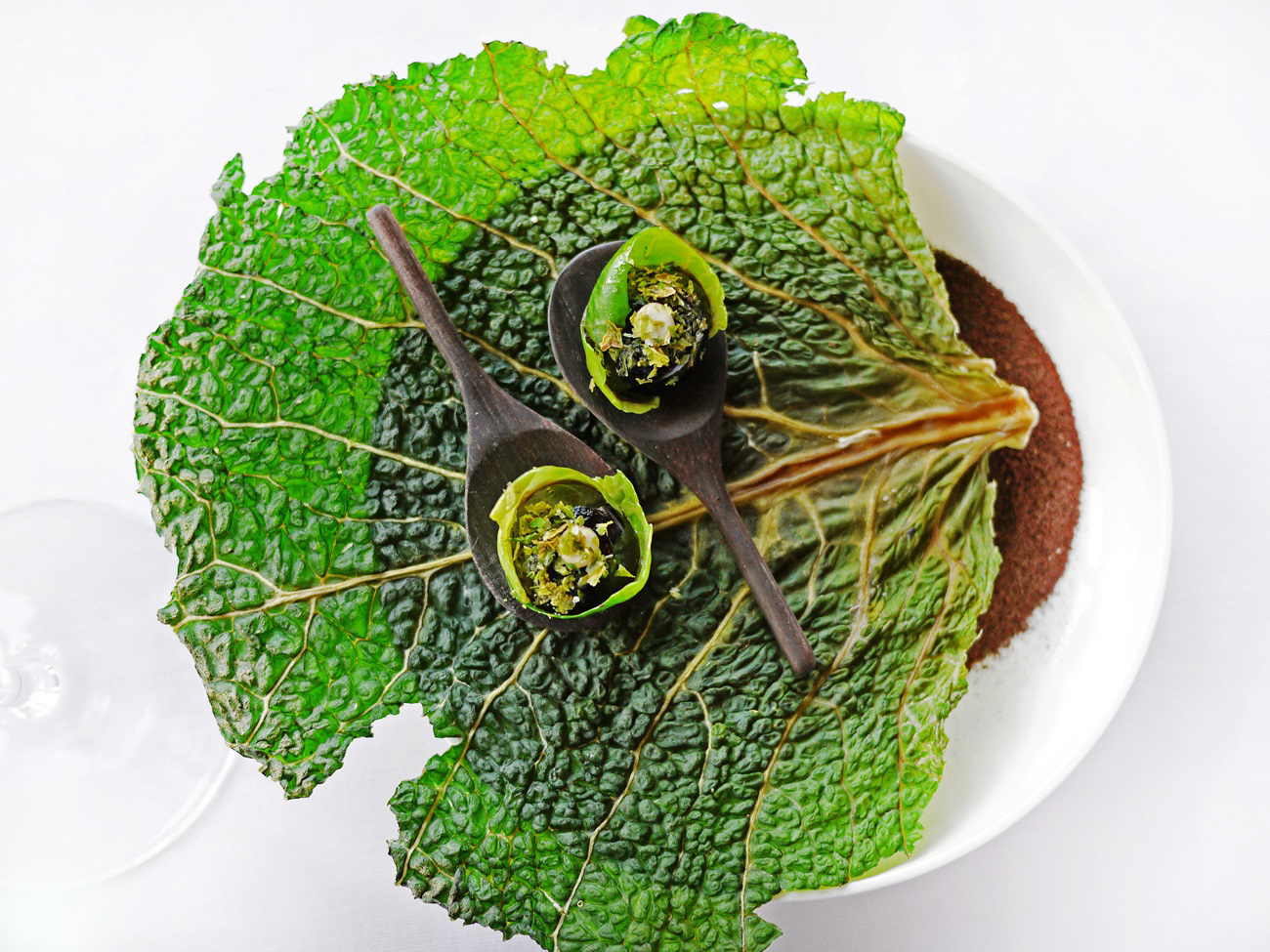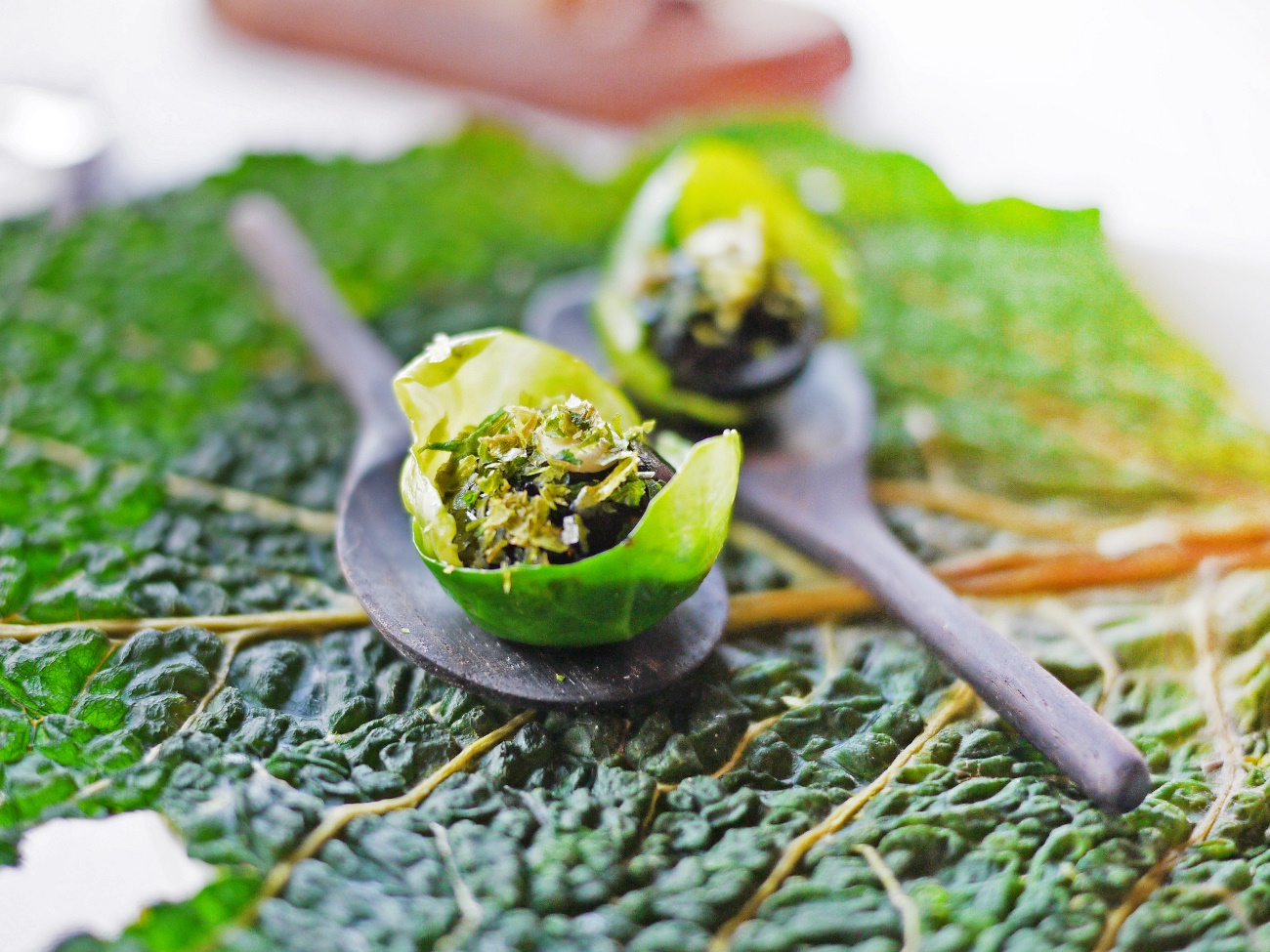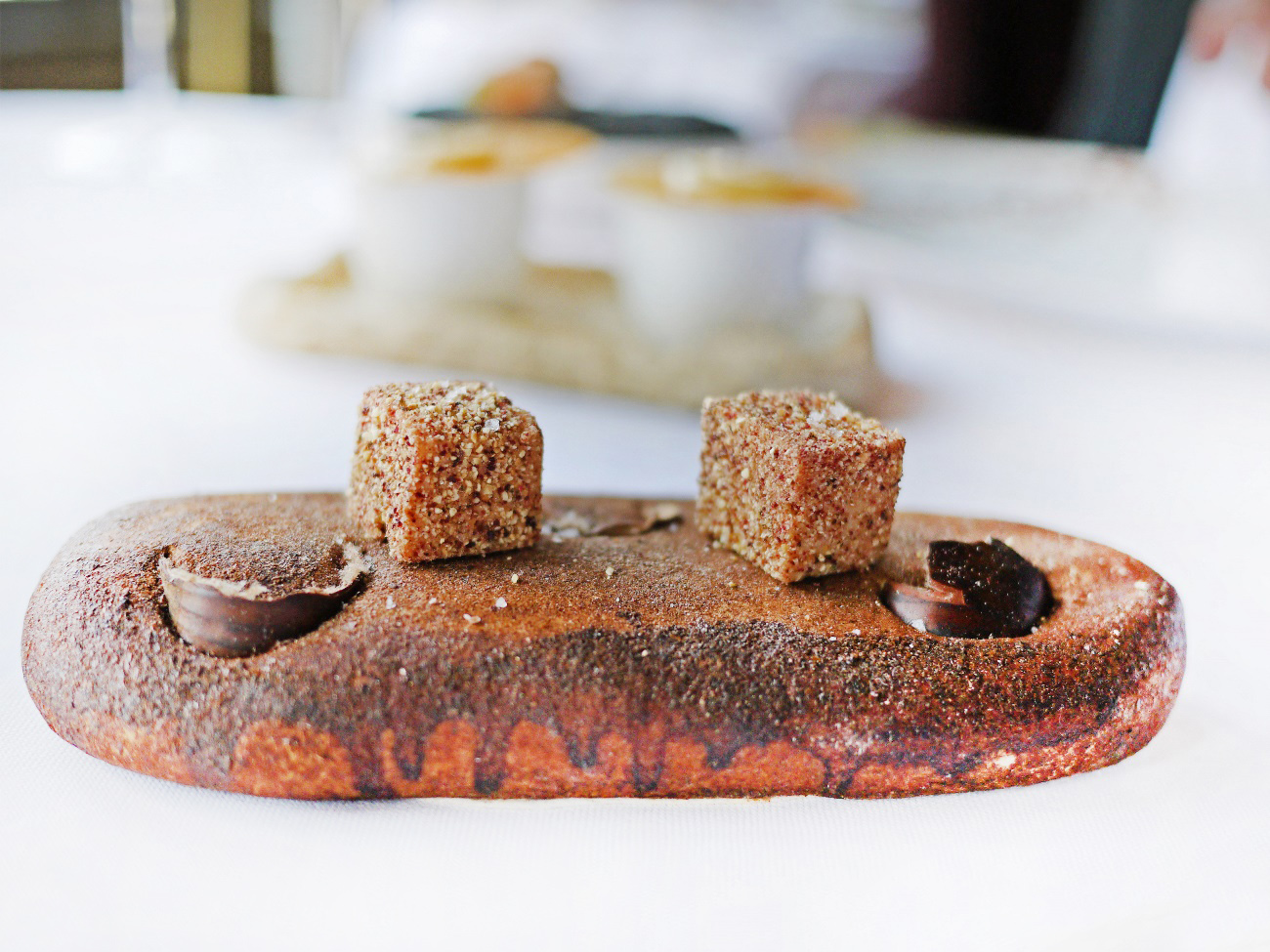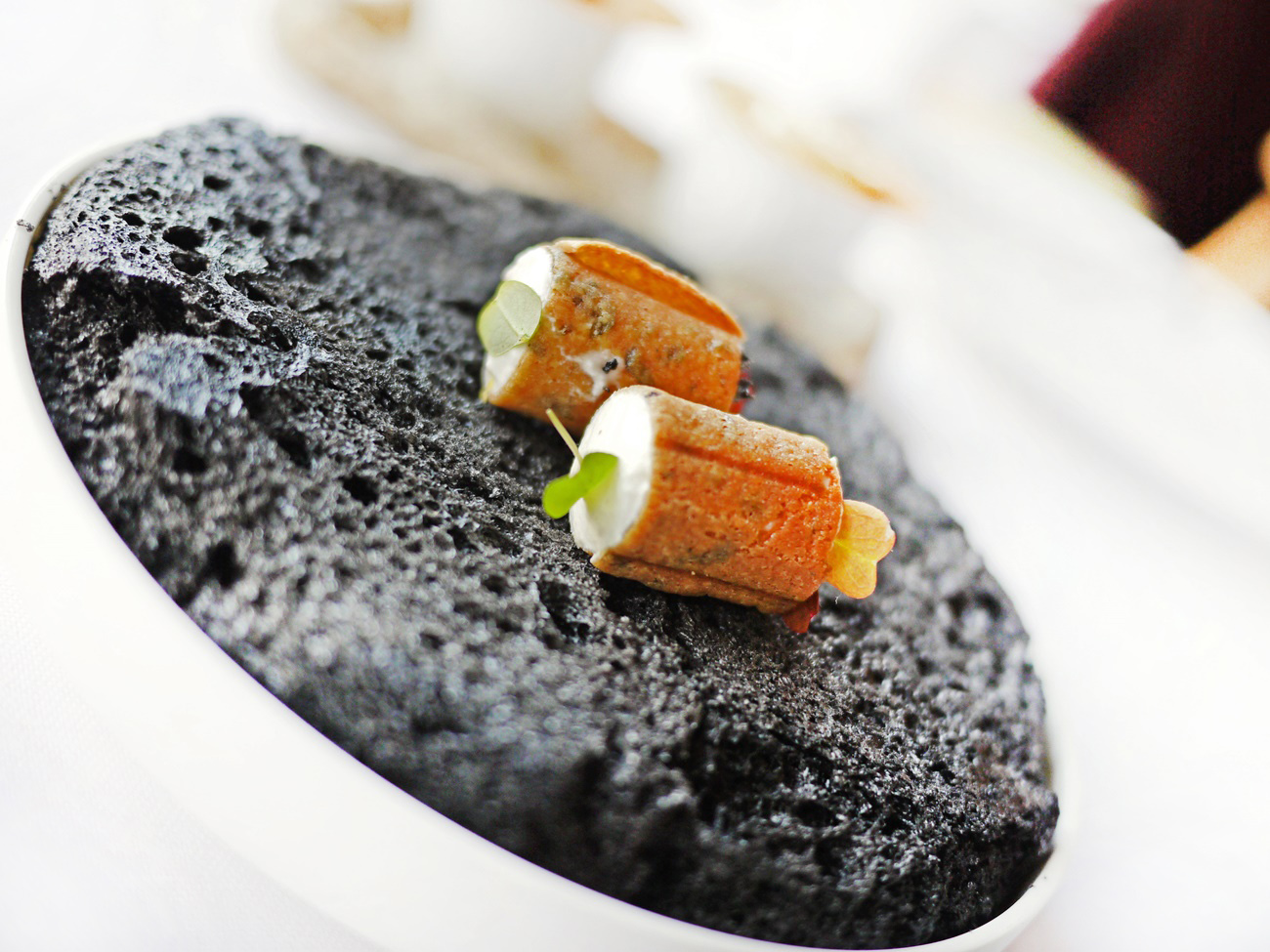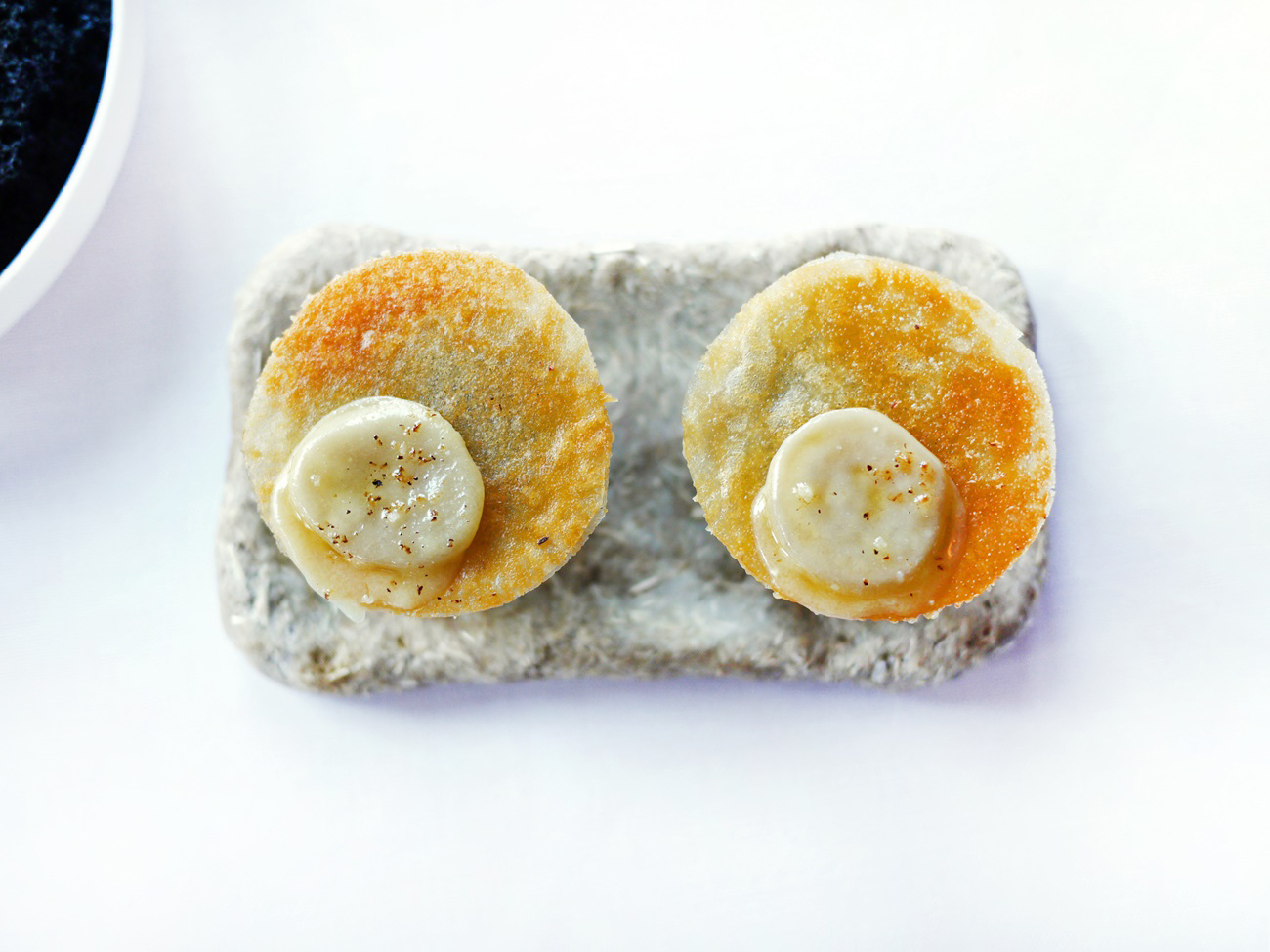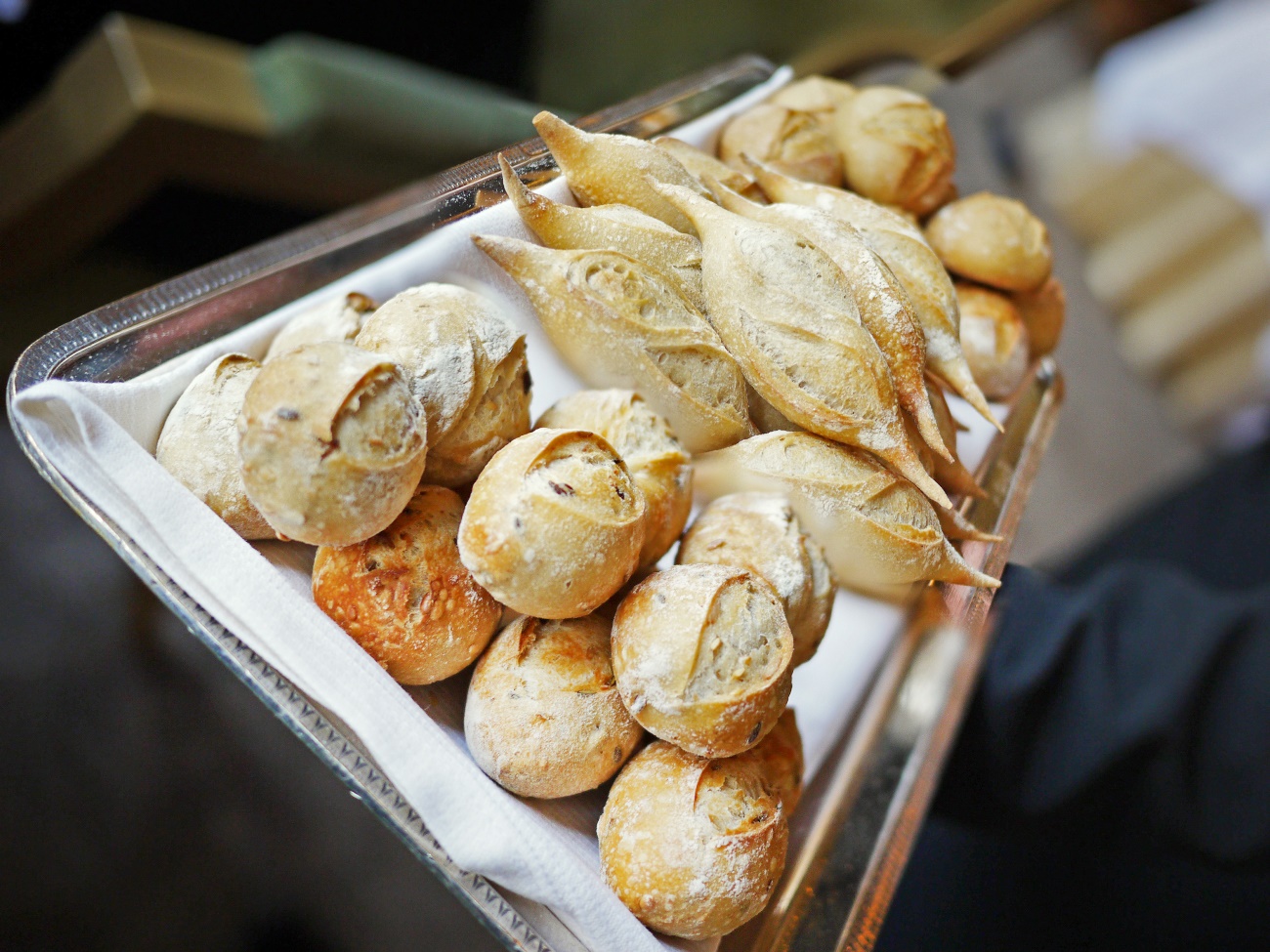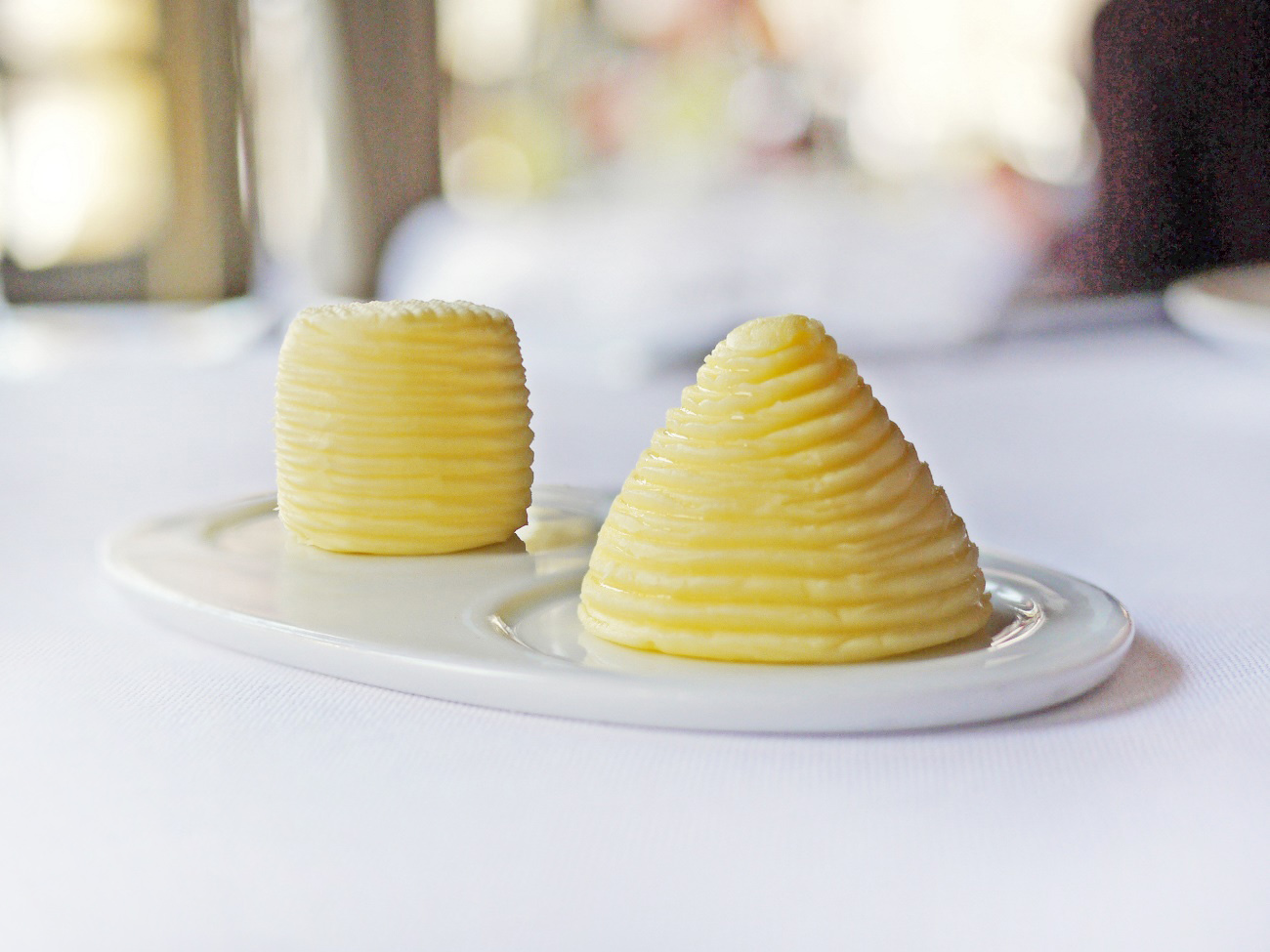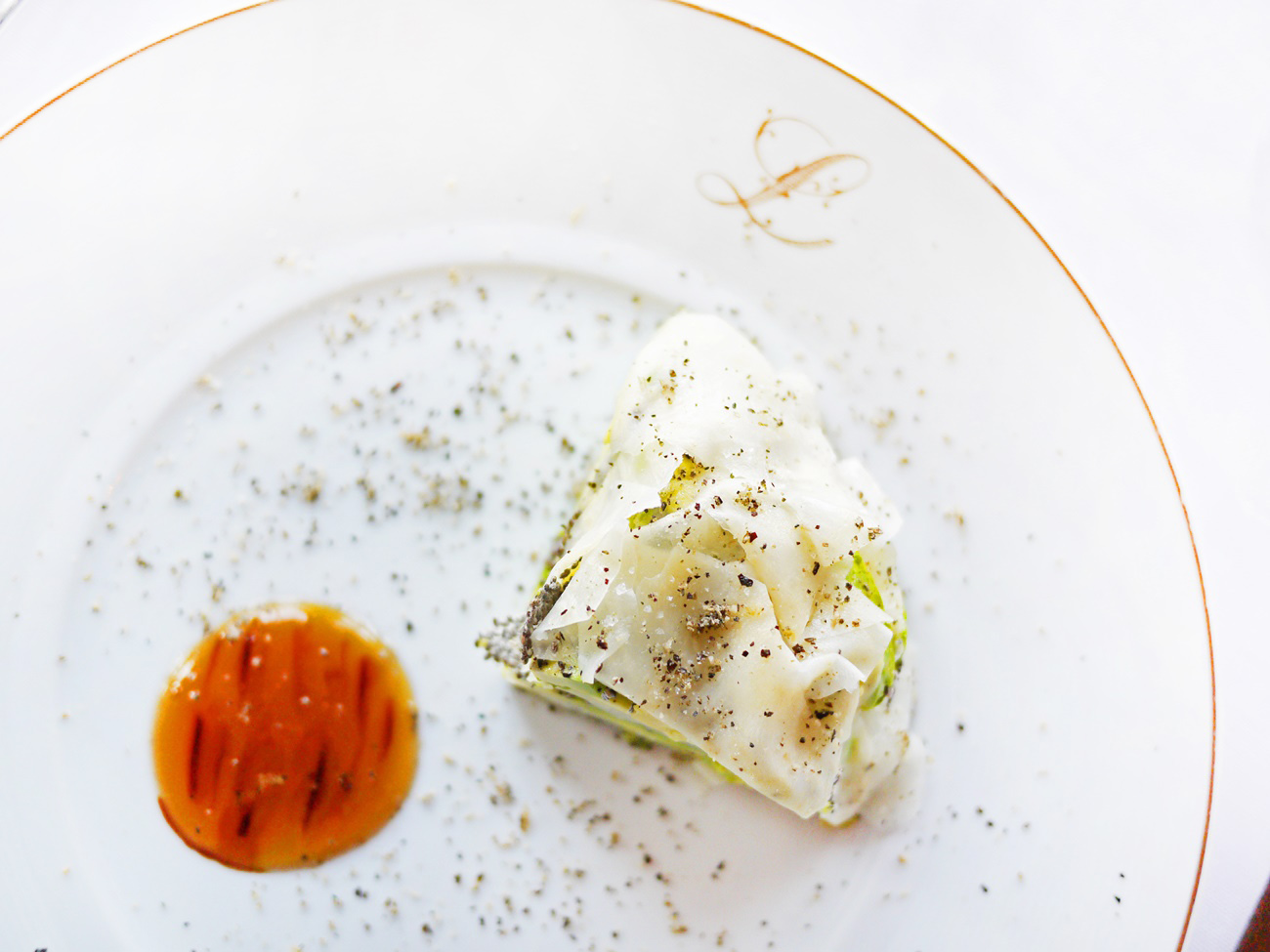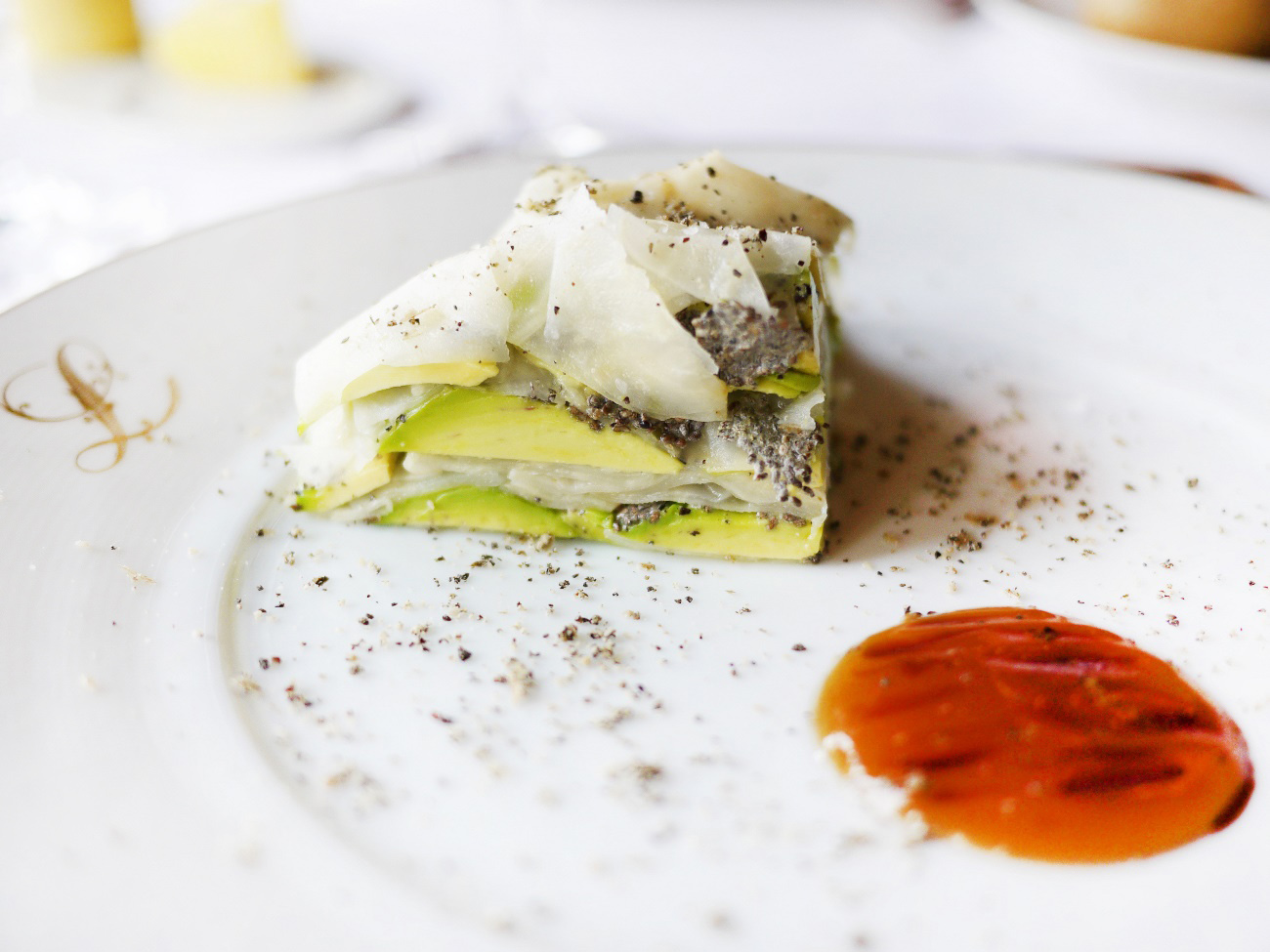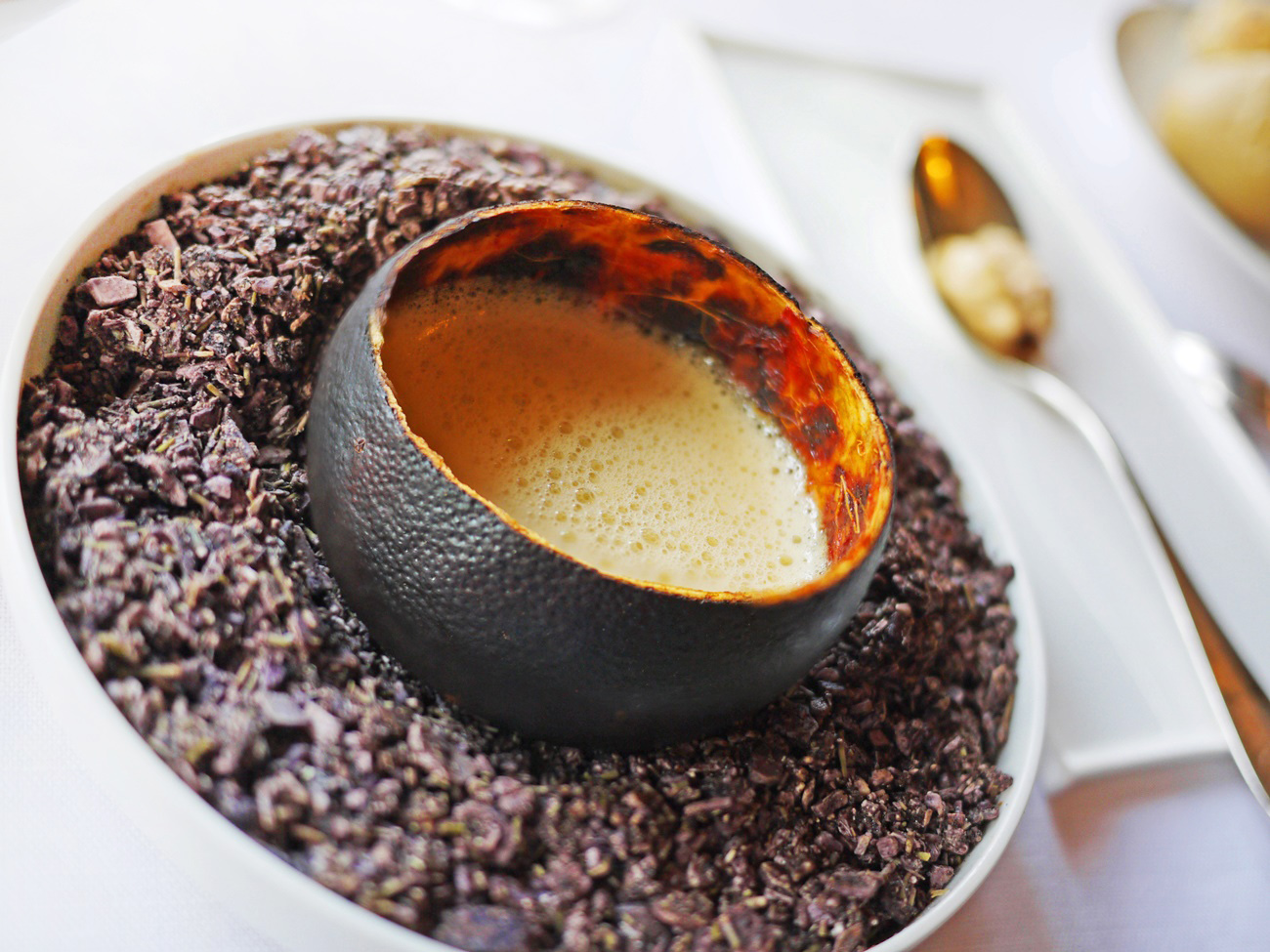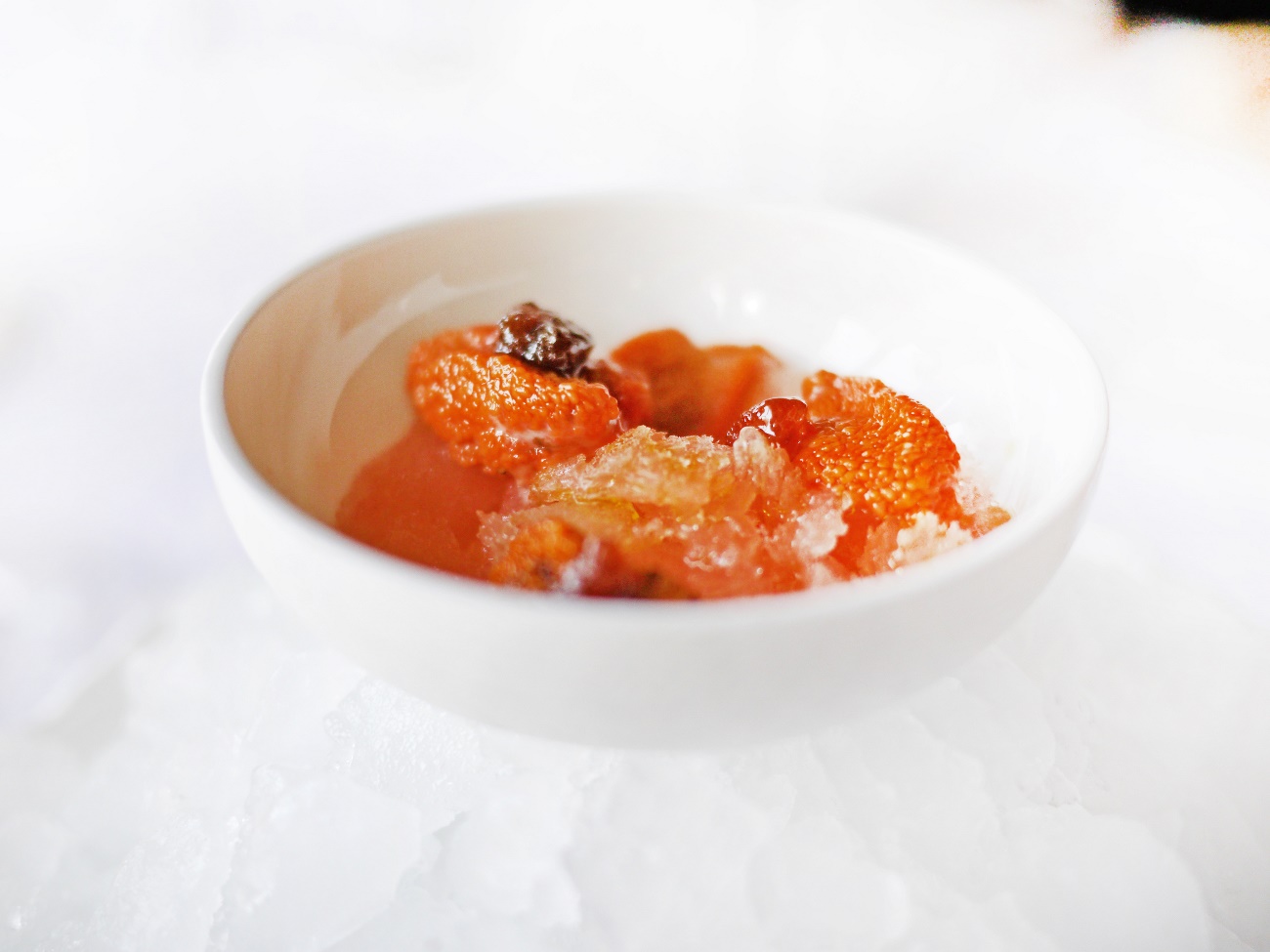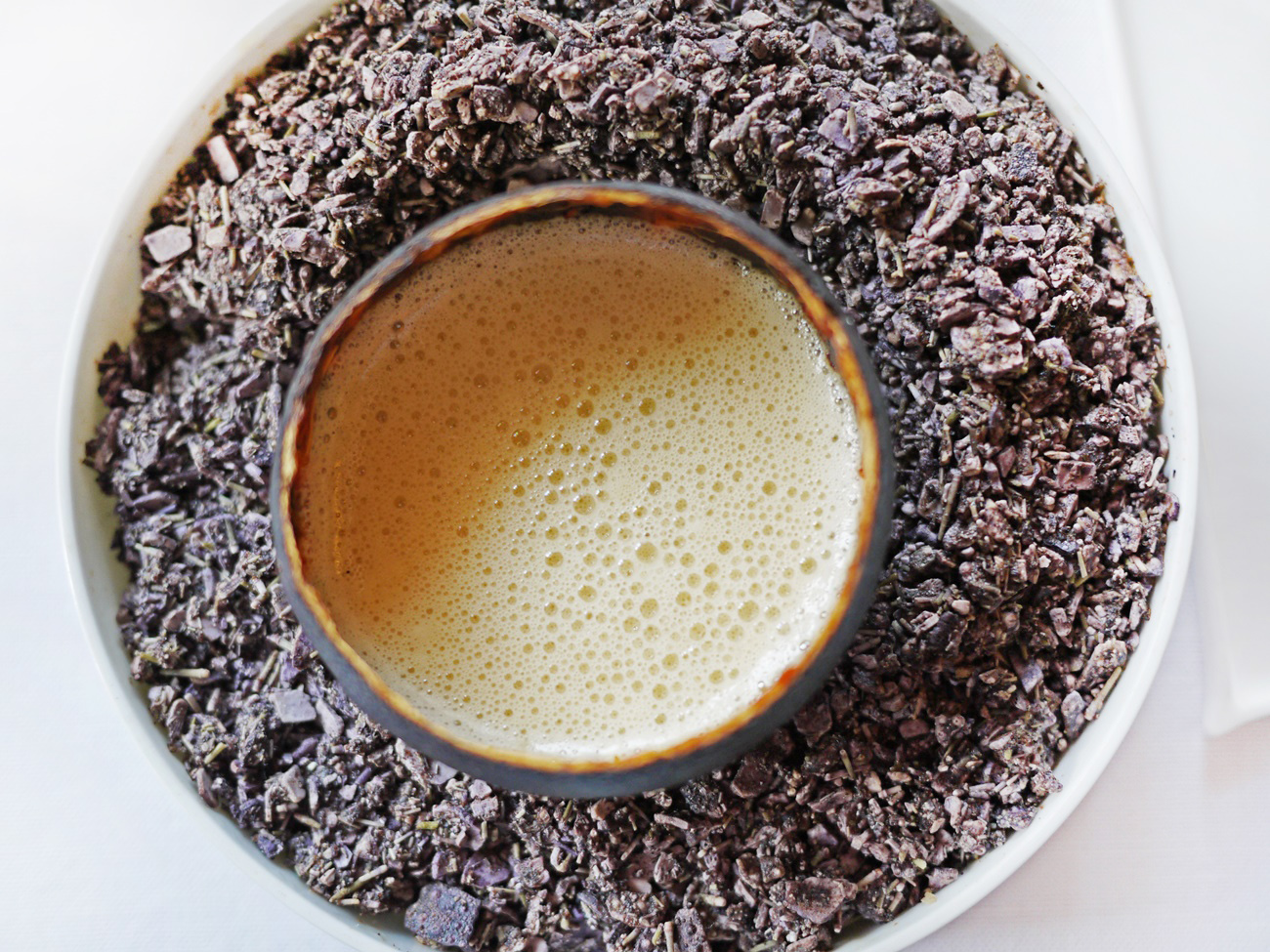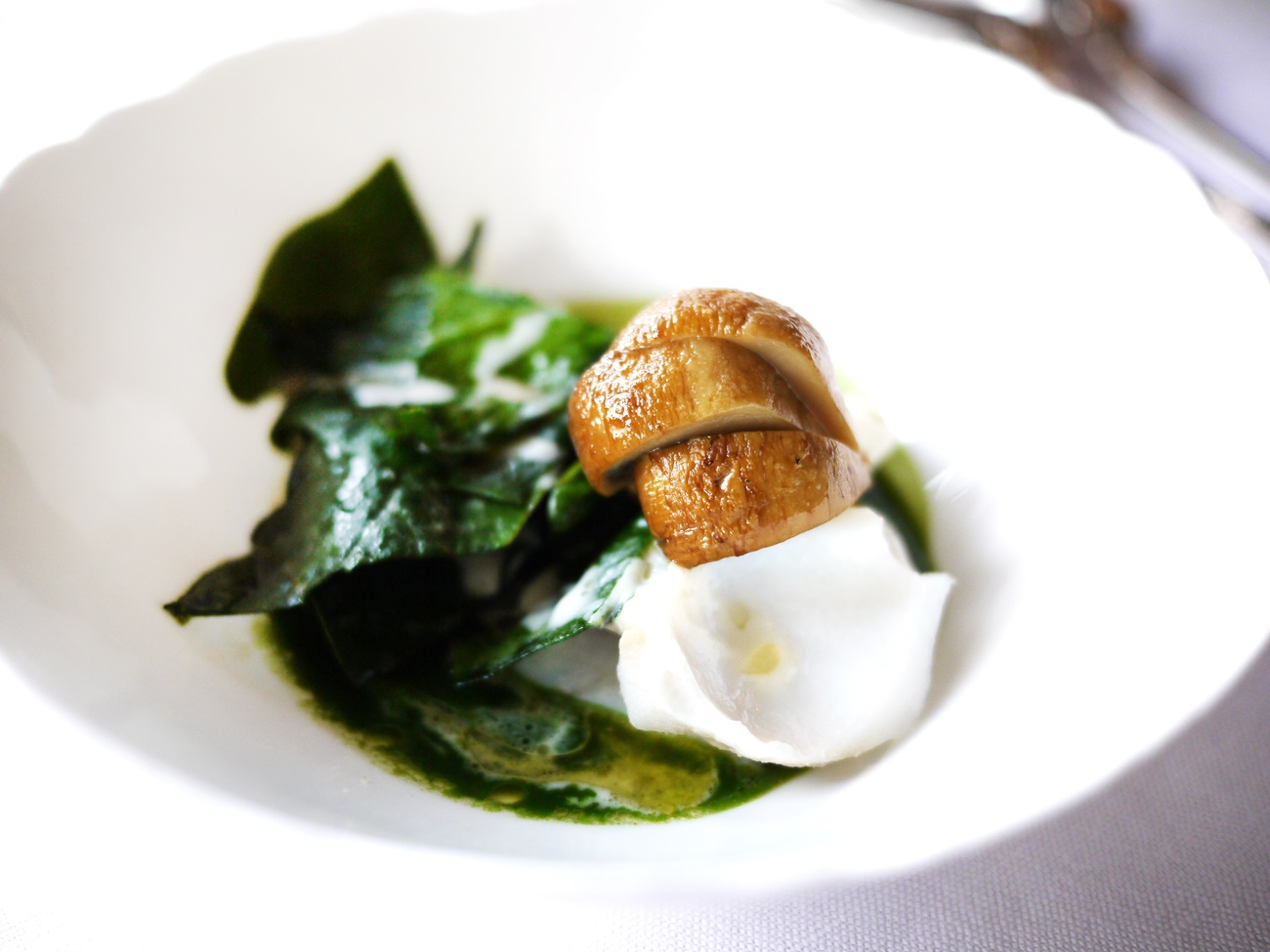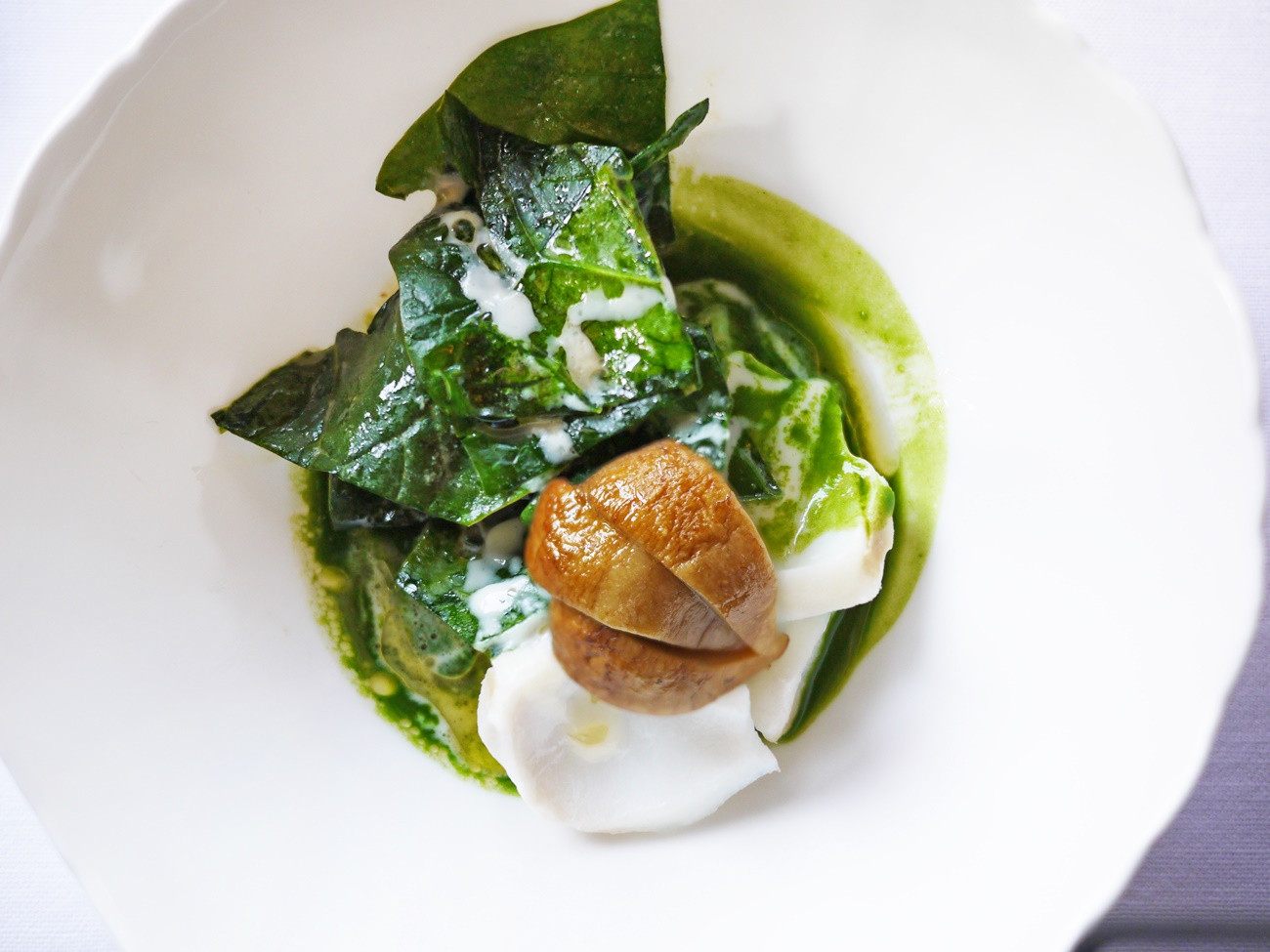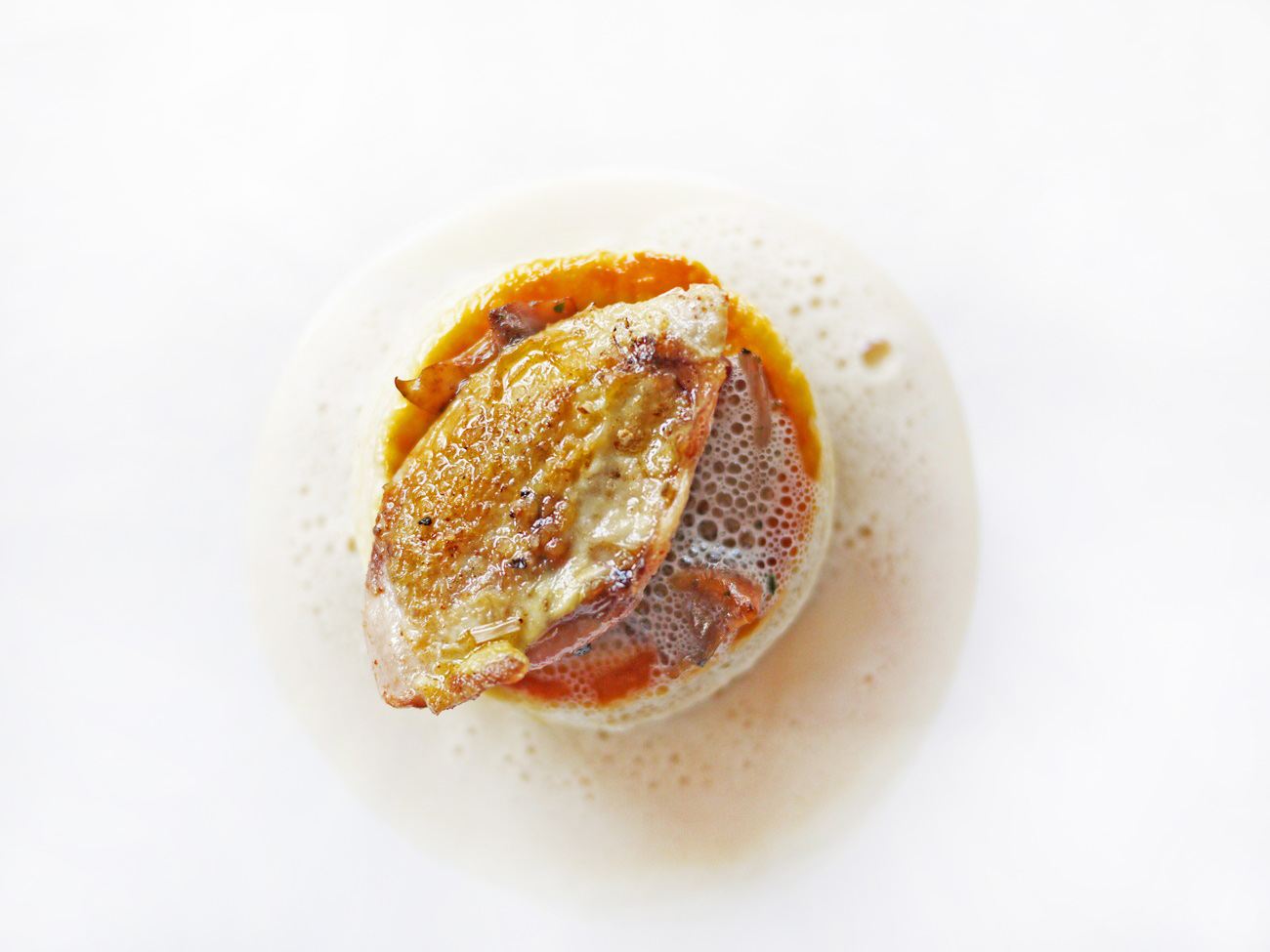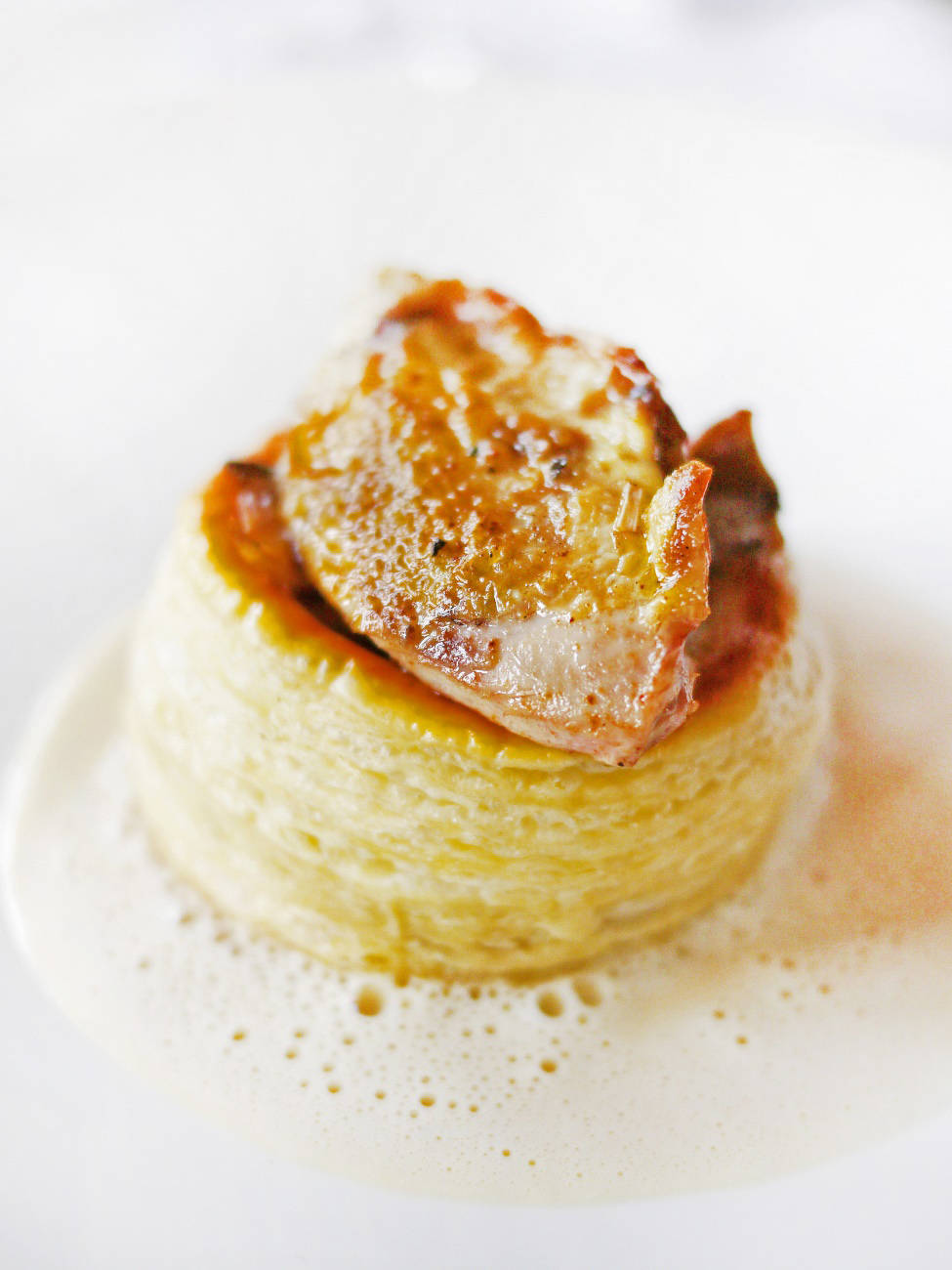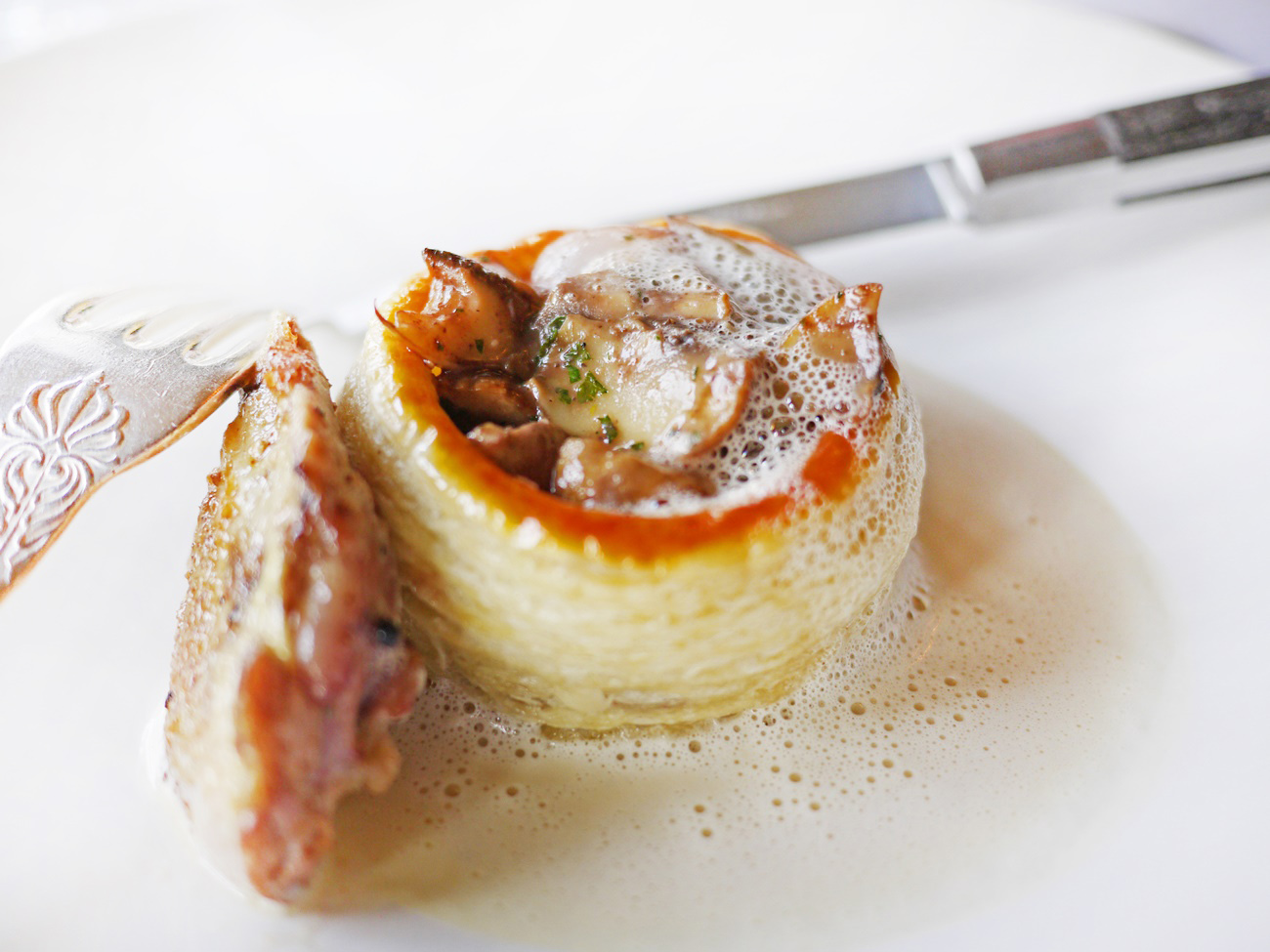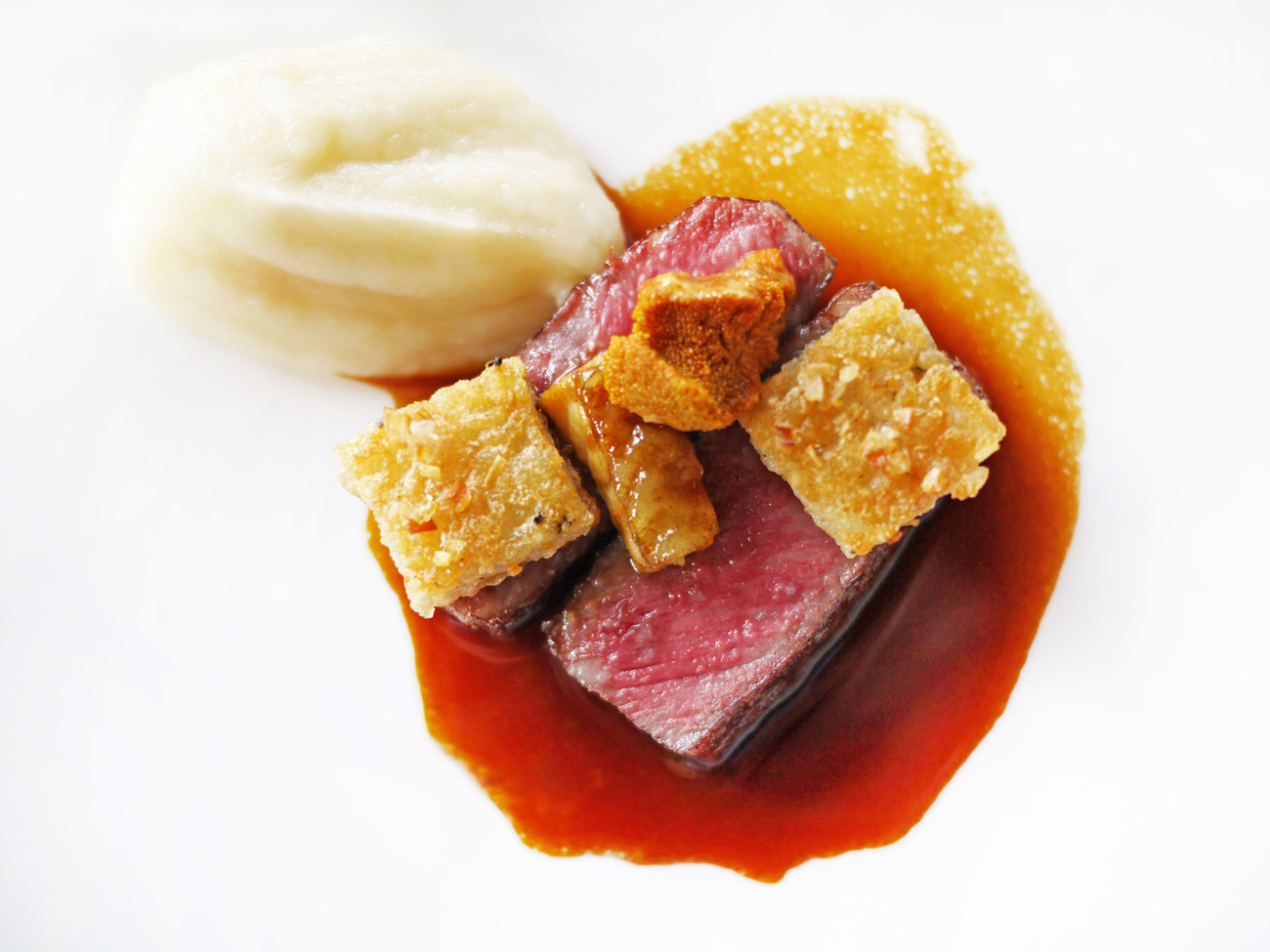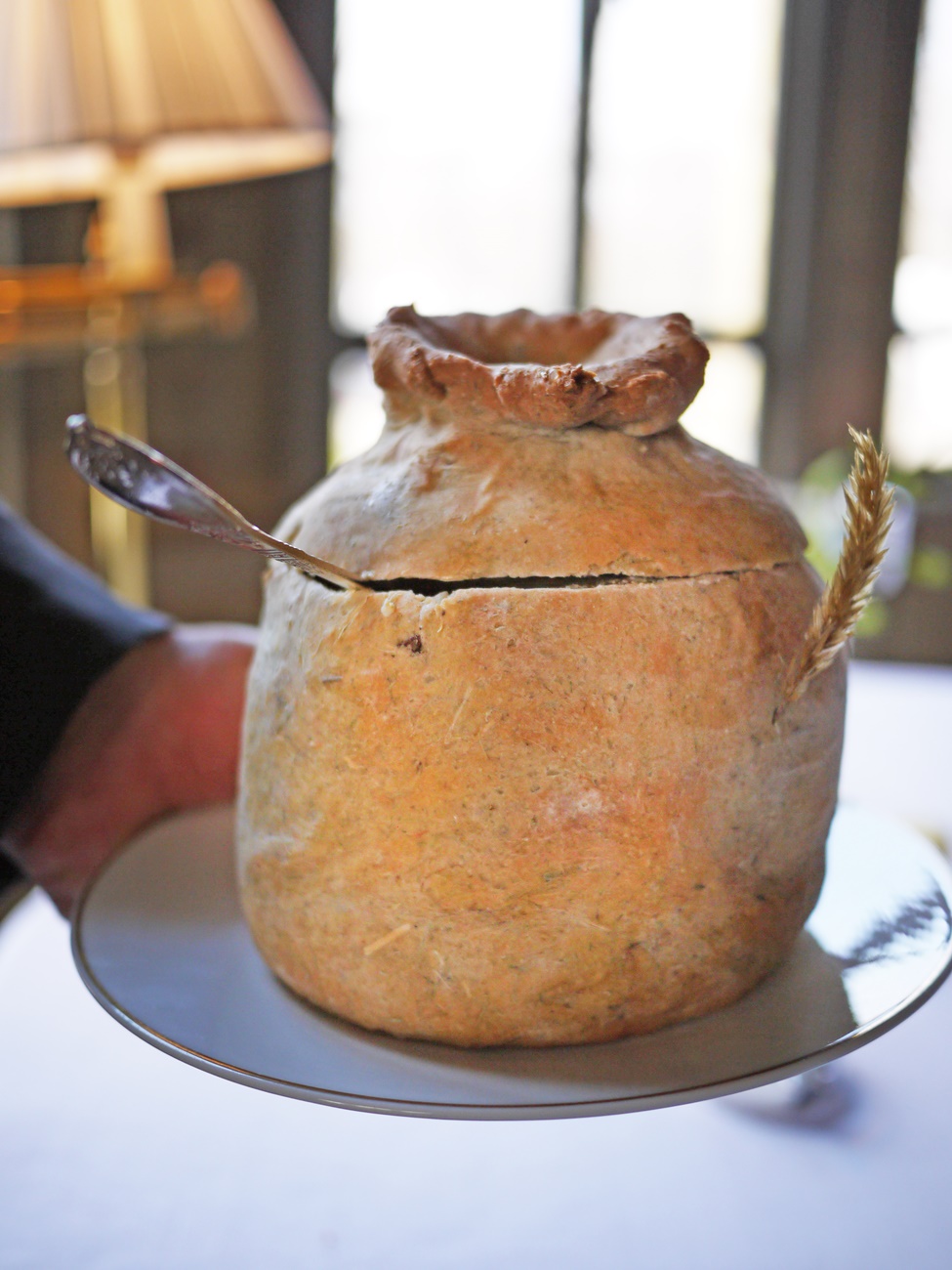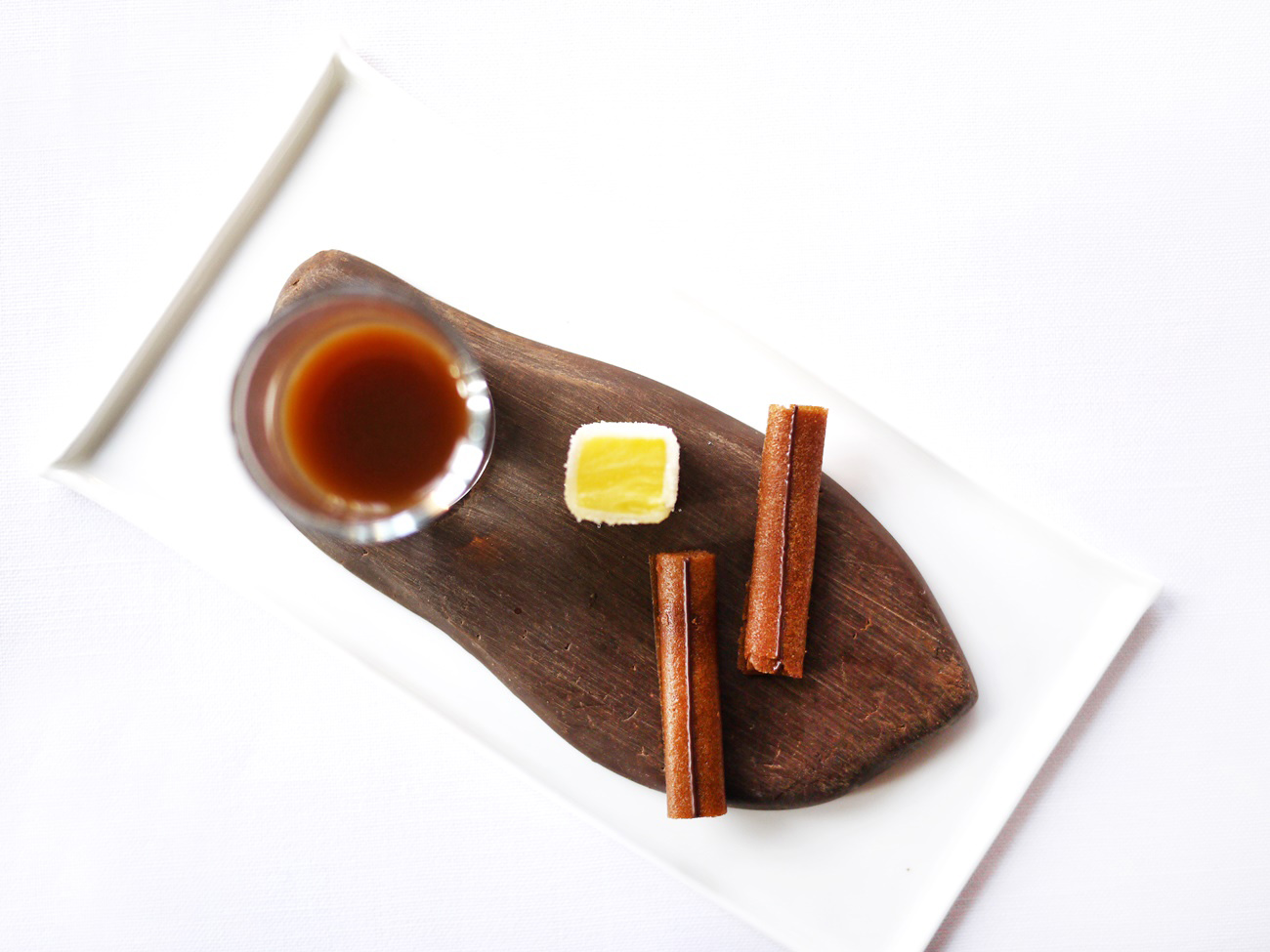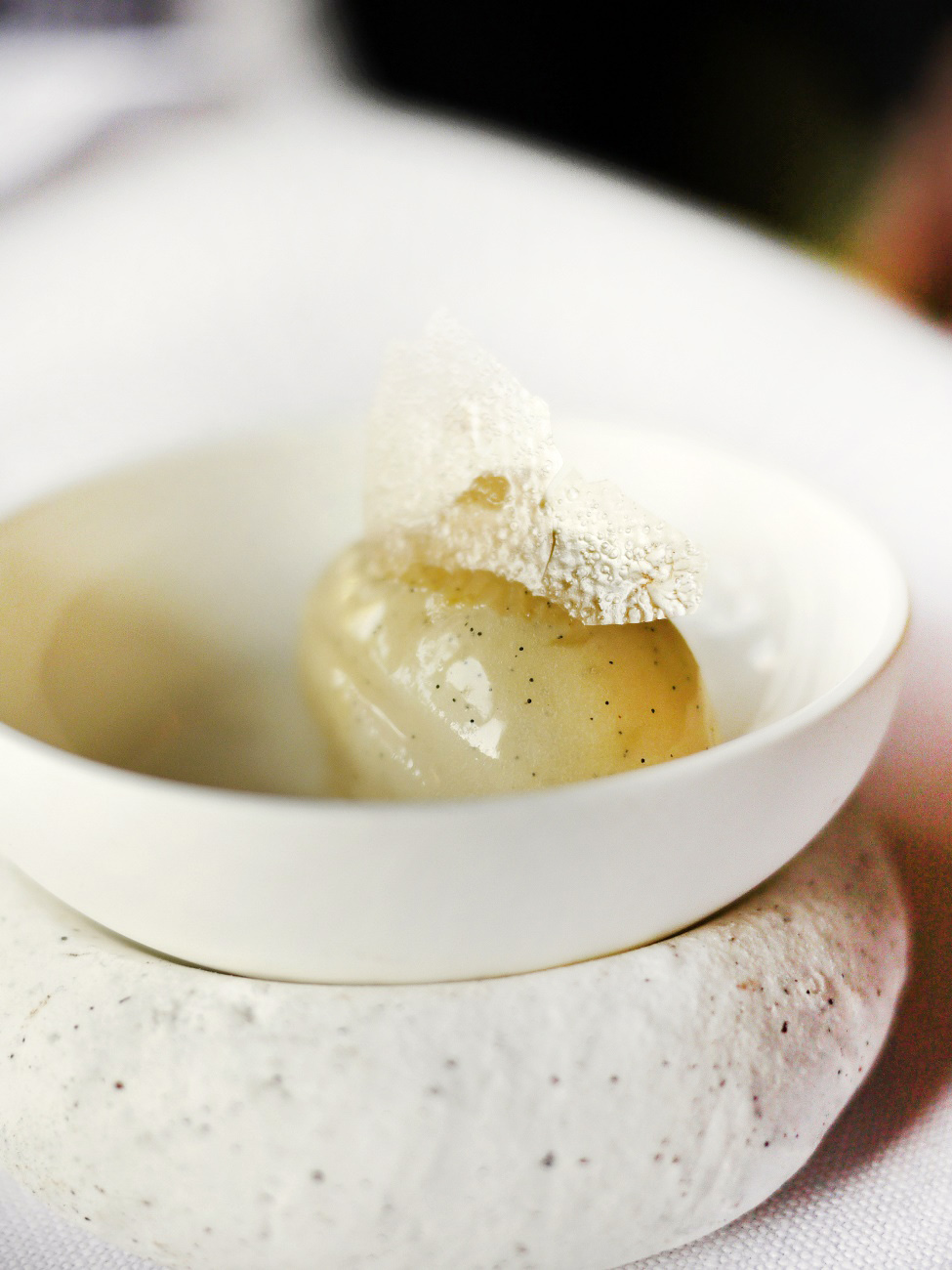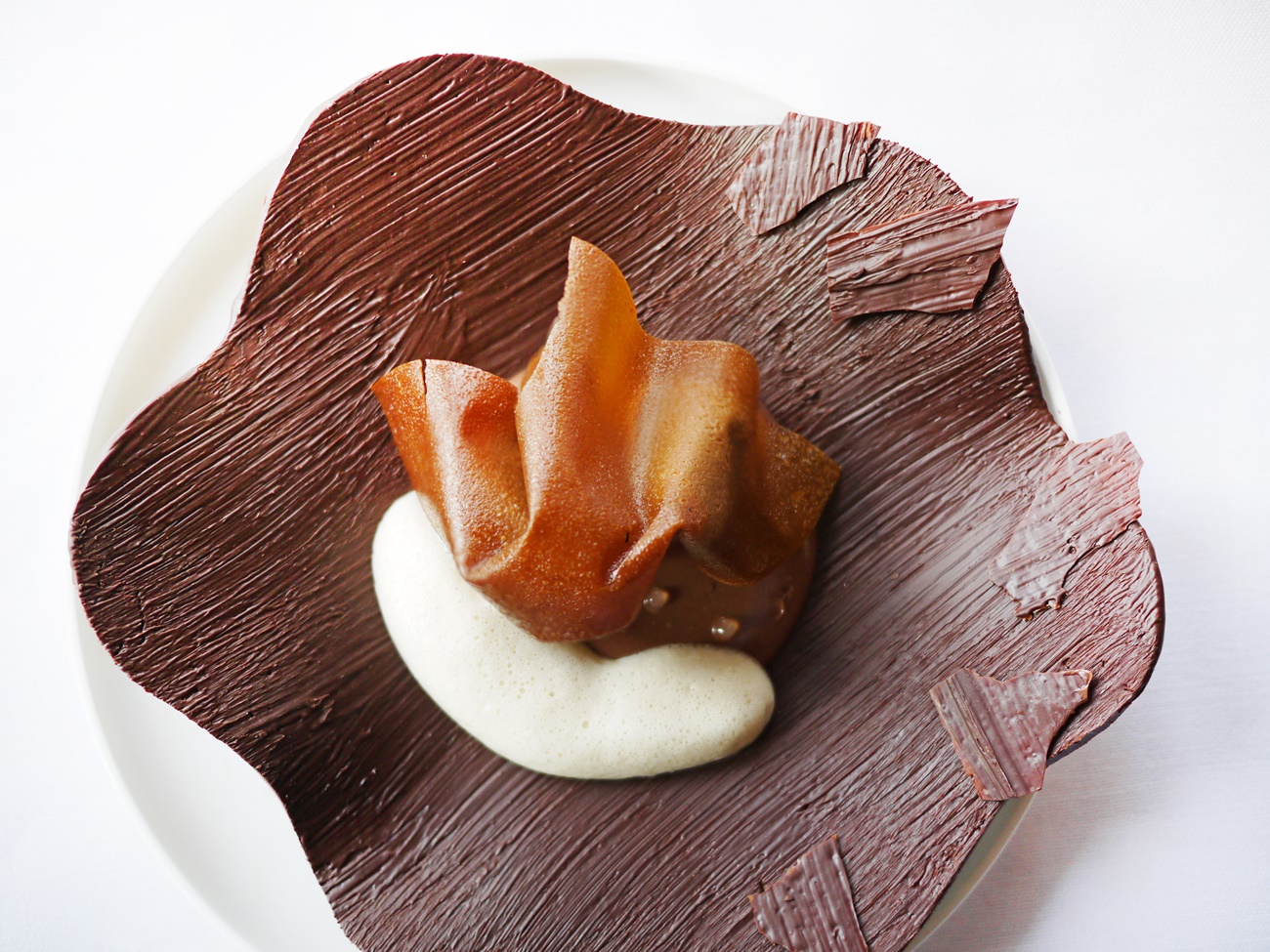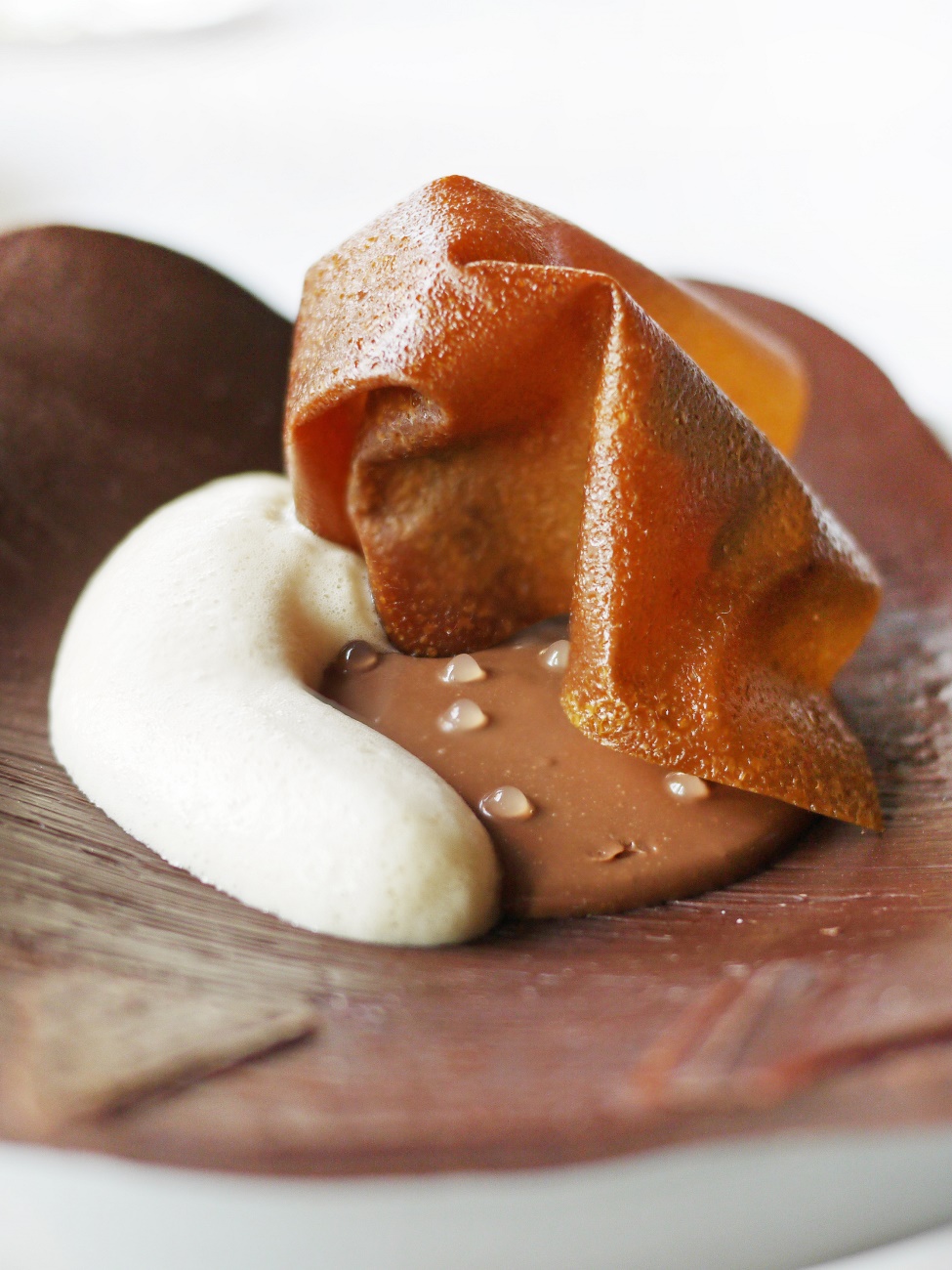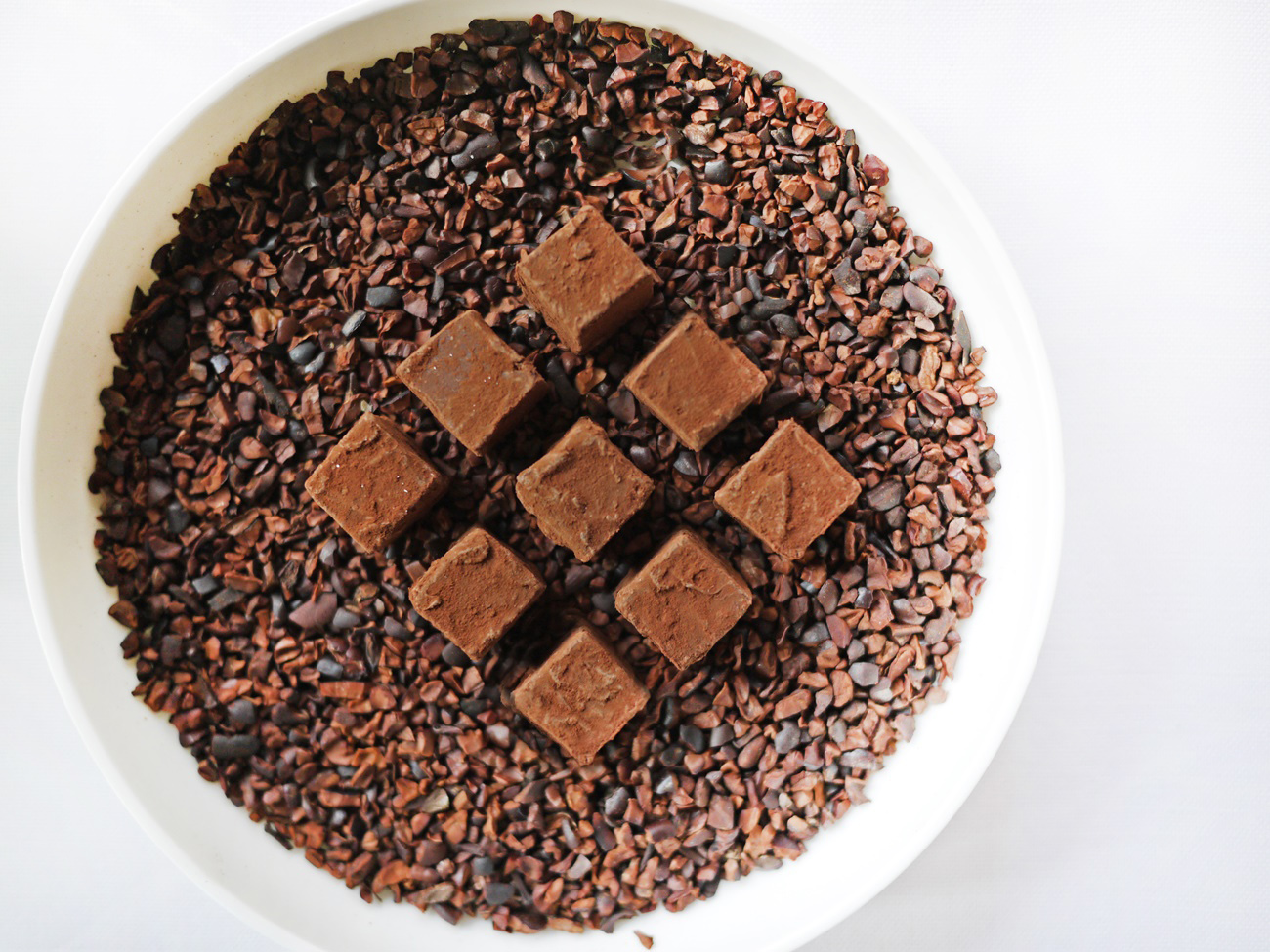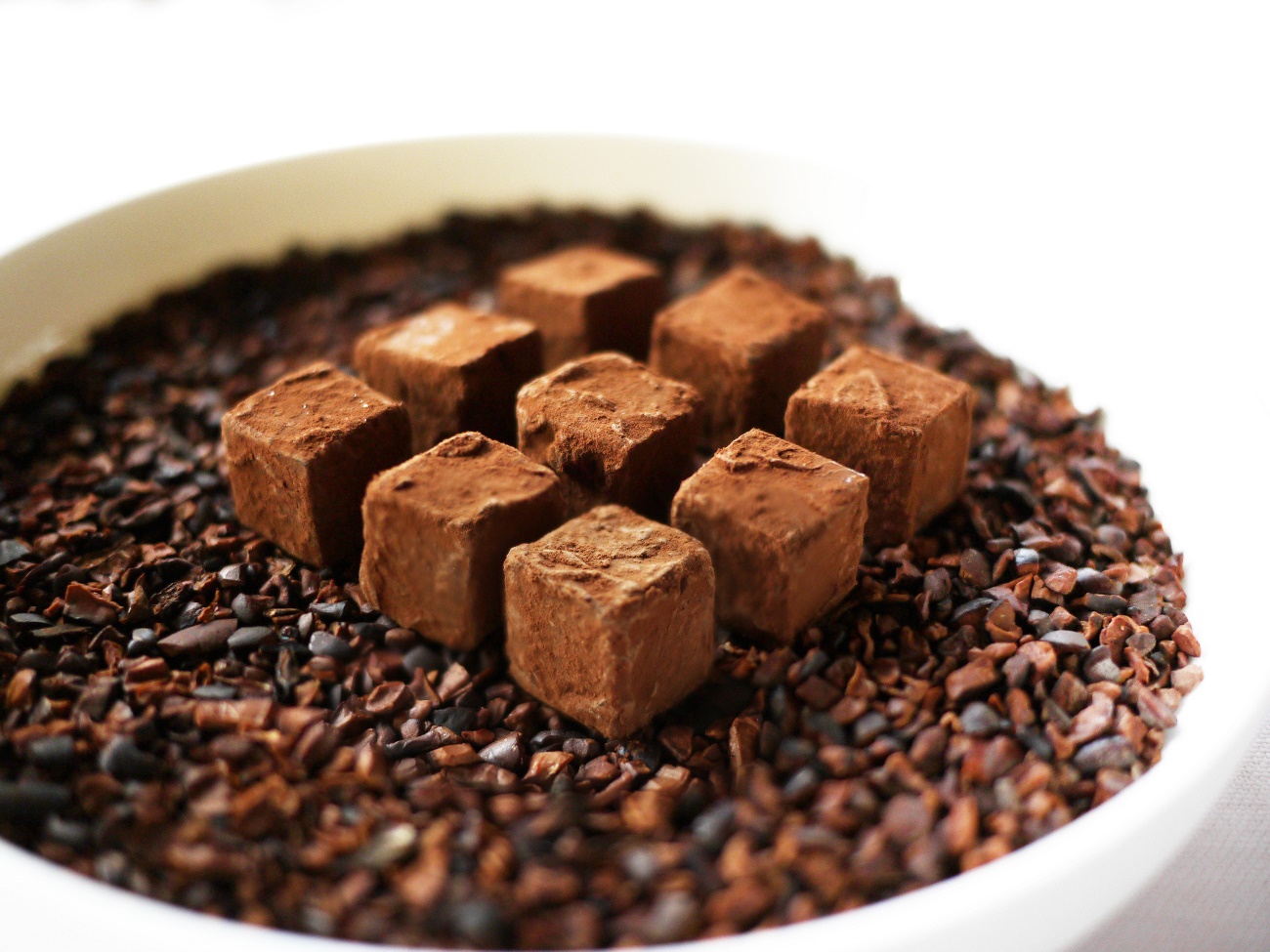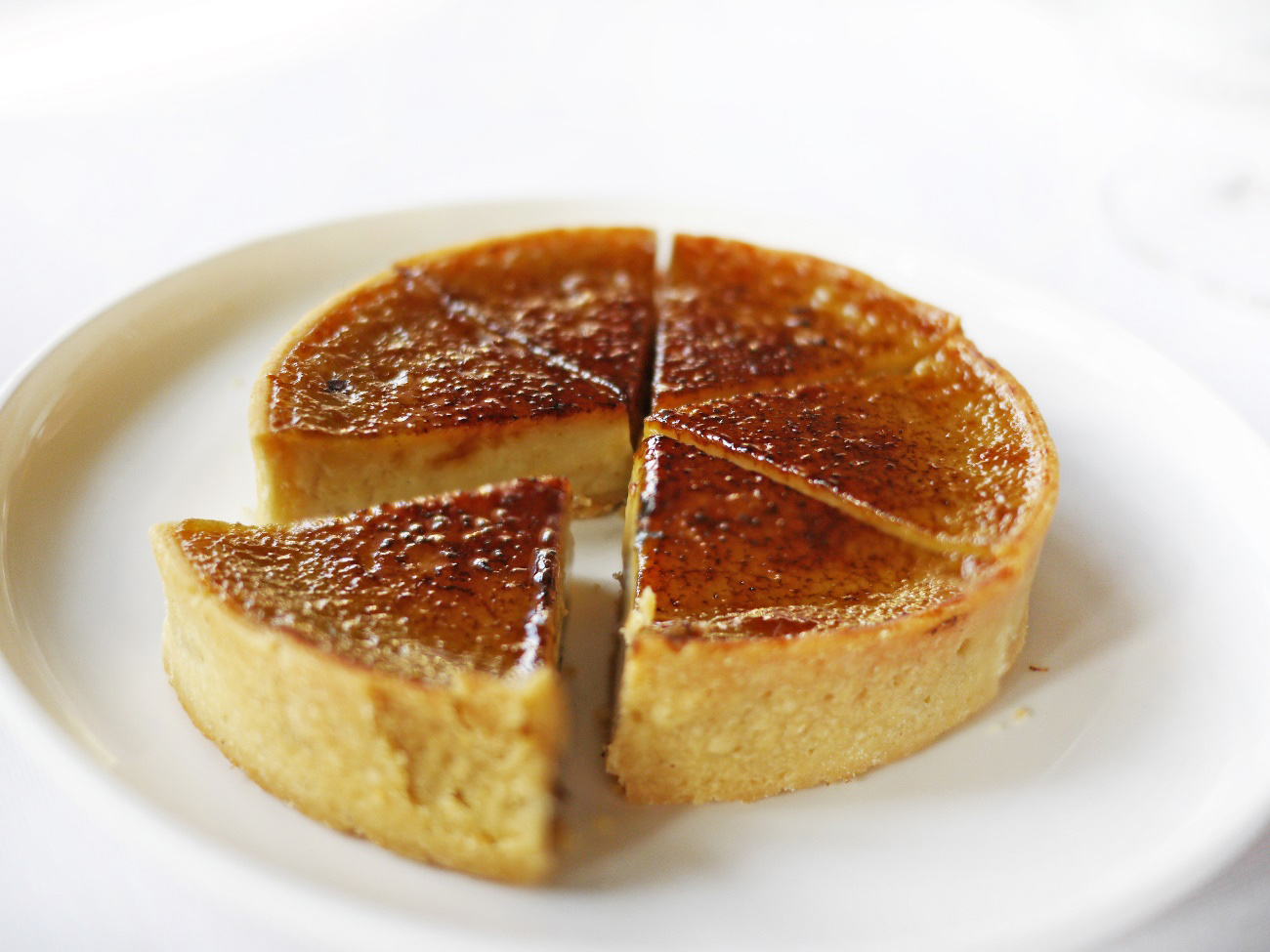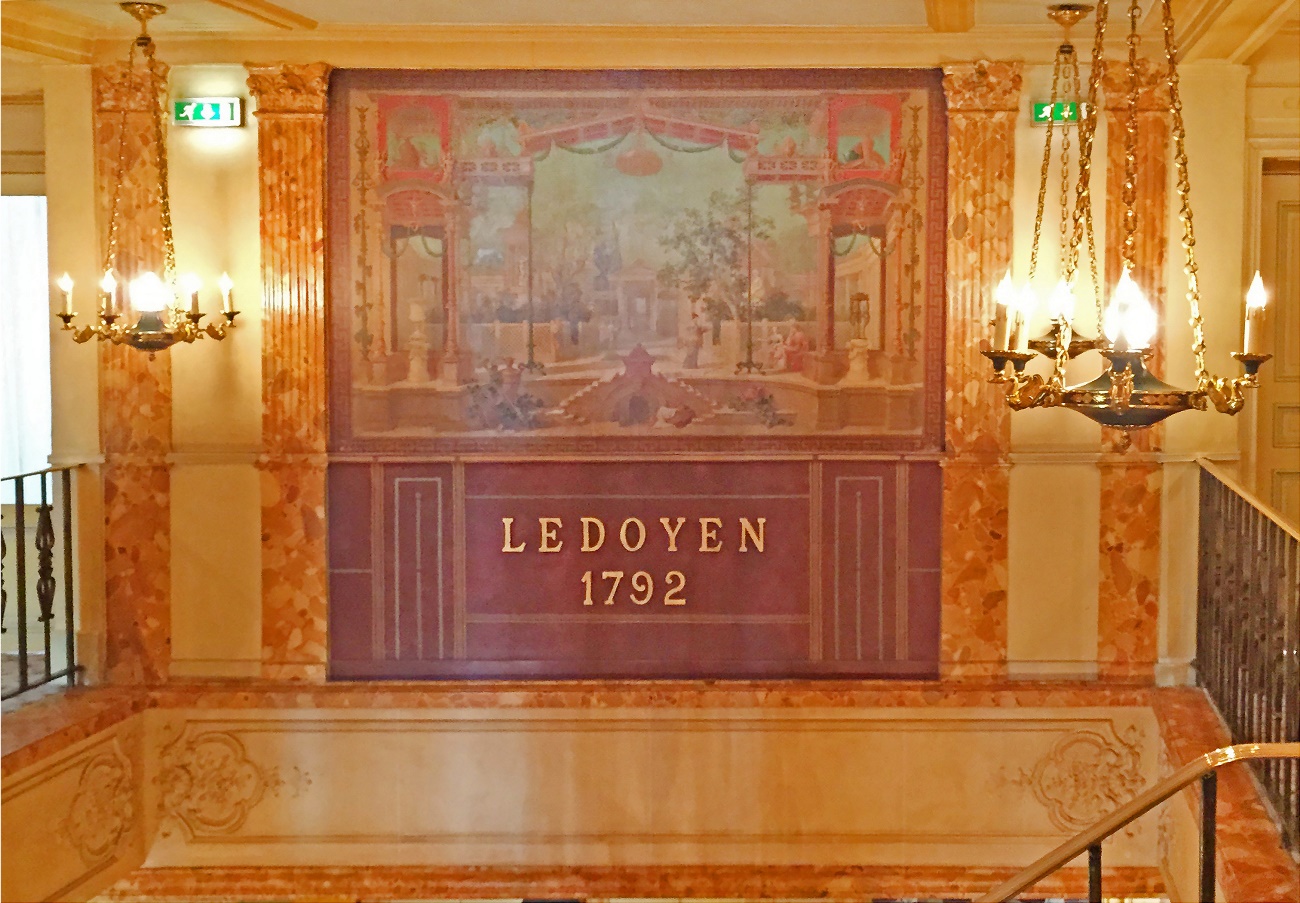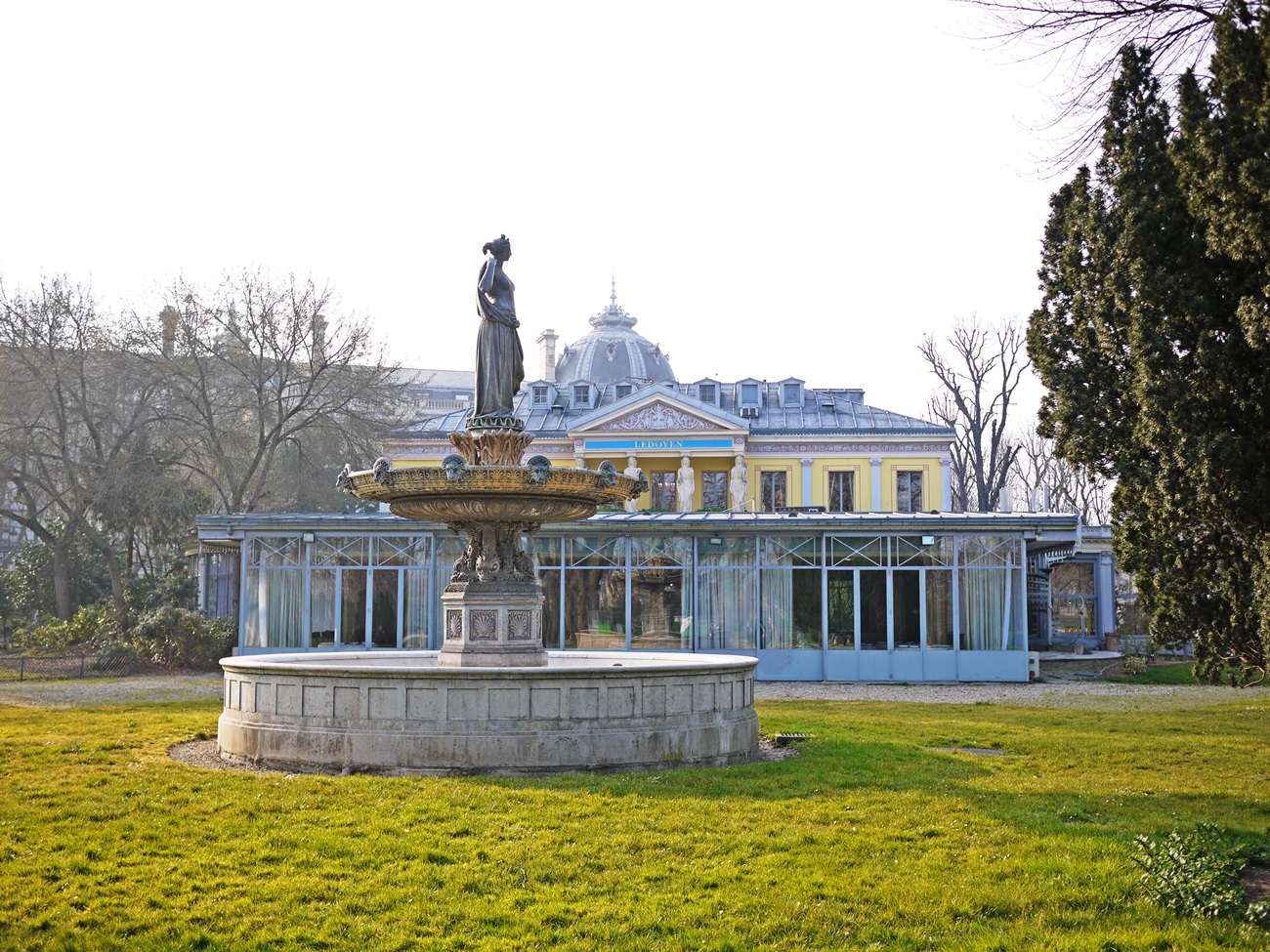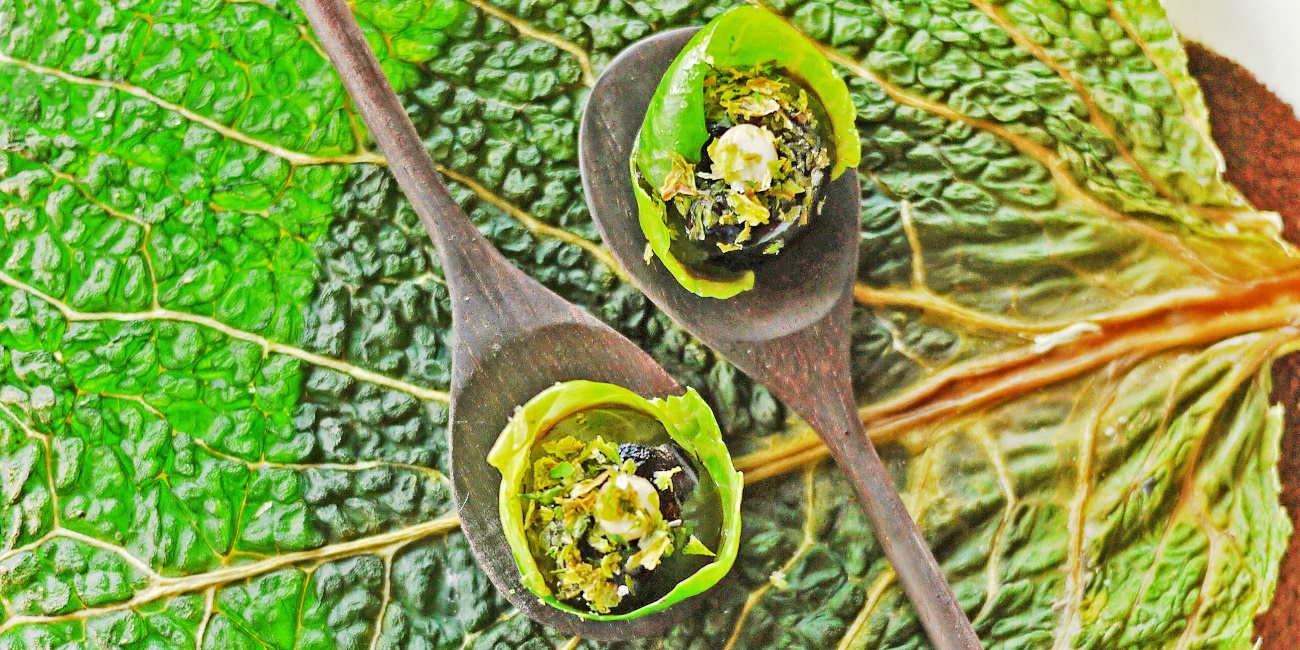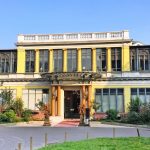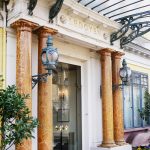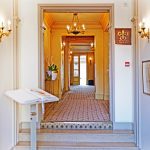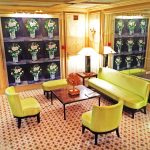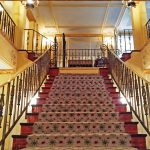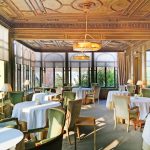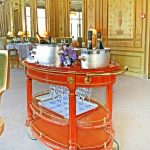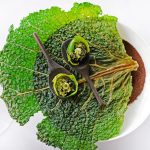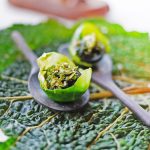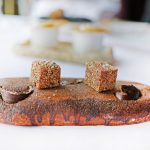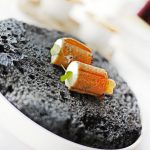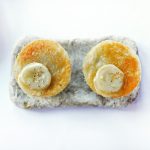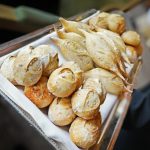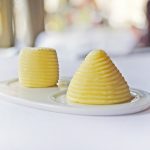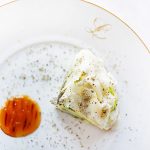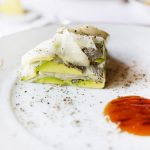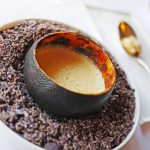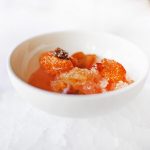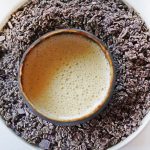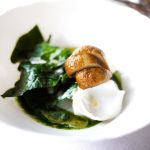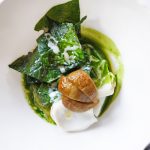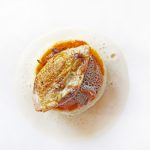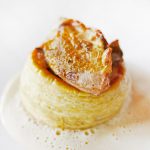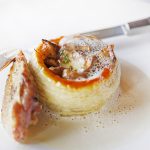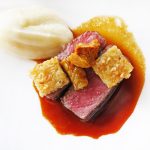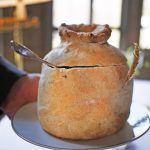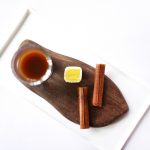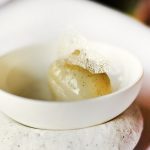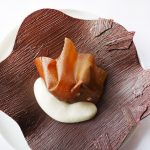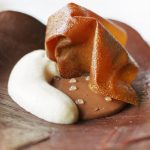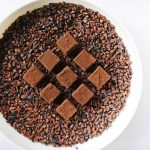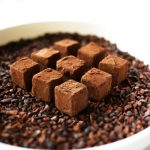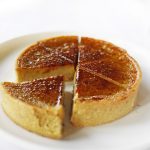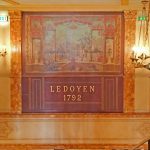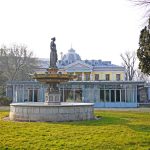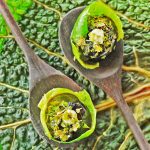CLICK ON THE MAIN PHOTO ABOVE TO VIEW CAPTIONS IN GALLERY FORMAT
Image 1: After an absence of 5 years, we decided to revisit this historical place, just minutes away from Place de la Concorde. In case you’re unfamiliar with it, Pierre-Michel Doyen established a formal restaurant here in 1791 during the French revolution. He called it Le Doyen, which eventually evolved into today's Ledoyen. Interestingly, it’s supposed to be the place where Napoléon and Joséphine first met.
Image 2: Over the last few years, the top chefs have played musical chairs with the Paris Michelin 3-star scene. When Chef Christian Le Squer left here for Le Cinq, Yannick Alleno took his place from Le Meurice, and Alain Ducasse took over the kitchen of Le Meurice!
Image 3: Prominently displayed in the entrance was this massive tome by Chef Yannick. Unlike other 3-star chefs who maintained pretty much the same style for decades, he’s still at the frontier of French cuisine. Yannick has a passion for delving deep into French culinary roots, revisiting the fundamentals and developing new ideas to push the boundaries of French cooking cuisine to new heights. Not only has he recently launched a French culinary magazine, but he’s written a book devoted entirely to sauces and their history!
Image 4: On the ground floor of the pavilion was a variety of waiting areas where super-keen early arrivals like us can count the minutes until the dining room is ready. Finally, it was, and we…
Image 5: …made our way up the stairs to the second floor to where it was located. We were certainly ready for lunch since we had both (my dining partner was the Cumbria Foodie) skipped breakfast.
Image 6: The dining room reeked of classical style, and overlooked the garden. Its preponderance of large windows and mirrors meant that it was flooded with bright, natural light. A beautiful place to eat!
Image 7: The team of waiters seemed keen to serve us. In fact, perhaps just a shade too keen. Even before we had taken our seats, the champagne trolley had appeared, and even before I had a sip, the full set of amuse bouche was served. This was quickly followed by the menu and wine list, and we were being prompted to order. I mean, efficient service is one thing, but this had a very slight feel of being rushed. And we certainly didn’t want to be rushed in such a gorgeous setting as this – we wanted to savour it!
Image 8: Great idea, this – using a large piece of flattened, dried cabbage leaf as serveware. Very dramatic! On top was a pair of wooden spoons…
Image 9: ...holding baby cabbage jelly - a delicate sphere of jelly full of liquid. These burst in the mouth yielding an intense cabbage flavour.
Image 10: Also on the table were Chestnut marshmallows…
Image 11: … a pair of Cream cheese seaweed rolls packed with eel jelly flavoured with lemon…
Image 12: … and small cups of warm onion consommé covered by crispy onion and a thin slice of scallop. A fun start - great mix of tastes, textures and temperatures. Love the creativity of the serveware!
Image 13: Bread arrived – a choice of three types: cereal, spelt, and baguette. There was also…
Image 14: … the natural and salted butter. As to the menu, the 4-course option was great value relative to their full tasting menu for €380. However, there were two a la carte choices that caught our attention too – the sea urchin and the Japanese beef. So (naturally!) we added two more courses to share.
Image 15: First up was a somewhat unusual-looking pie called Avocado millefeuille! The waiter told us that the pie contained coconut extract and Cameroon avocado that had been on the tree for 18 months. I wasn't entirely sure what that should mean – a riper fruit, perhaps, so more flavour? There was only one way to find out. So I took a bite, and…
Image 16: ... it had a creamy but subtle flavour. The white layer of the pie was actually slices of celeriac which had been marinated in fermented carrot juice. Chia seeds had been mixed in to add more texture, and on the side was thick syrup of turnip, mushroom and soy sauce. Interesting to see a Chinese touch. I don't want to seem dismissive of the dish as I’m sure a lot of work went into it, but when you come right down to it, it was really just a plain avocado salad! Nice, but not exciting.
Image 17: Next came the extra course we had chosen from the a la carte menu – and it was a truly mind-blowing sea urchin - grapefruit. The waiter advised us to start with the spoon on the right, which had fat from duck skin and foie gras…
Image 18: …then alternate between chunks of sea urchin and grapefruit granite with …
Image 19: … the warm sea urchin velouté served in a bowl made from the burnt shell of a dehydrated Grapefruit! And what an interesting experience! The bitterness of the frozen grapefruit somehow resonated with both the richness of the warm Spanish sea urchins and the slightly metallic overtones produced – I imagine – by their iodine content. The whole thing was complemented beautifully by a delicate ‘burnt’ aroma. This must be the most memorable course of our trip so far! Unusual, for sure - but fun!
Image 20: And now we’re back with the second course of the set lunch menu. We were presented with a small bowl containing a mixture of cod, spinach, and brown Paris mushroom. There was nutmeg and melted cheese too. We both thought there must be more to it, that another component of the dish would arrive. But no – this turned out to be the entire second course of the 4-course menu!
Image 21: Not that either of us could fault the taste. It was fine. But I have to be honest – both of us thought that, for a Michelin 3-star kitchen in Paris to produce a dish that a student could pretty much replicate at home was a bit depressing. What a waste of talents here!
Image 22: …the main course. Again, not exactly huge, but more generous than its predecessor.
Image 23: A piece of quail on puff pastry, with a very traditional cream sauce. The pastry was flaky, buttery, and…
Image 24: …stuffed with pieces of crunchy, garlicky mushroom, with tomato paste at the bottom. Again, very pleasant flavours, we had absolutely no complaints on that score. But, once again, there was nothing on the side, making it a rather simple course which would be likely to satisfy none but the very lightest of appetites. It didn’t satisfy ours, for sure. Cumbria Foodie and I exchanged glances which said ‘aren’t we glad we ordered the extra beef course?’
Image 25: The course was all about the meat. Imported all the way from Japan, this Wagyu beef was well-marbled and (needless to say) full of flavour. The perfectly balanced blend of meat and fat resulted in a uniquely bouncy mouthfeel, while the jus had a full, meaty flavour carrying a light smokiness. It was garnished with crispy rice, sea urchin and smoked eel. On the side, instead of potato, was…
Image 26: …celeriac purée, mashed and baked with hay butter in a dough container. It didn’t need much seasoning as the pure taste of creamy celeriac was strong and satisfying enough.
Image 27: Before the main dessert…this small wooden tray is bearing rolls of chocolate tuile, along with baked pineapple coated in almond paste. There was also a shotglass of cocoa bean water – which is how chocolate was originally eaten, back in the days of the Aztecs, more bitter than sweet. I had something similar once before in a chocolate museum.
Image 28: It was followed by pear and vanilla sorbet. Then came the main dessert of…
Image 29: … Crystallised Chocolate Leaf with milk and hazelnut mousse. The pieces of thin chocolate on the edge were almost perfectly camouflaged against the plate. Interesting!
Image 30: Underneath was cocoa sorbet, with tiny drops of lemon gel. Sweet, fruity, bitter, nutty, crunchy… there were lots of taste components. Not bad at all!
Image 31: Finally, the petits fours…
Image 32: …nine small cubes of chocolate ganache. So soft, the merest touch crushed them. ..
Image 33: … and a mini chocolate and Guinness beer tart, topped with a layer of caramelised sugar.
Image 34: So, it was a rather rushed start, but as we’d hoped, it calmed down and the service was much more relaxed after. The restaurant’s director, Frédéric Pedrono, also spent lots of time with us sharing the philosophy of Chef Yannick's cuisine. He’s very active in the hospitality industry, organising programs to identify and train the next generation front of house staff. We actually talked for a full hour before he showed us the way out, a journey that took us past this painting of Ledoyen from the 18th century.
Image 35: Although we enjoyed the extra courses from the a-la-carte, we felt that the 4-course lunch menu really didn’t do justice to the chef’s talent. For a meal that produced by one of the most accomplished kitchen teams in the country, you do expect a little more than a simple avocado salad, a small bowl of spinach and cod, and then a tiny quail pastry. Also a shame is the fact that the beautiful dining room will soon be partitioned into a few small private rooms while the ground floor will be used as the main dining area.
